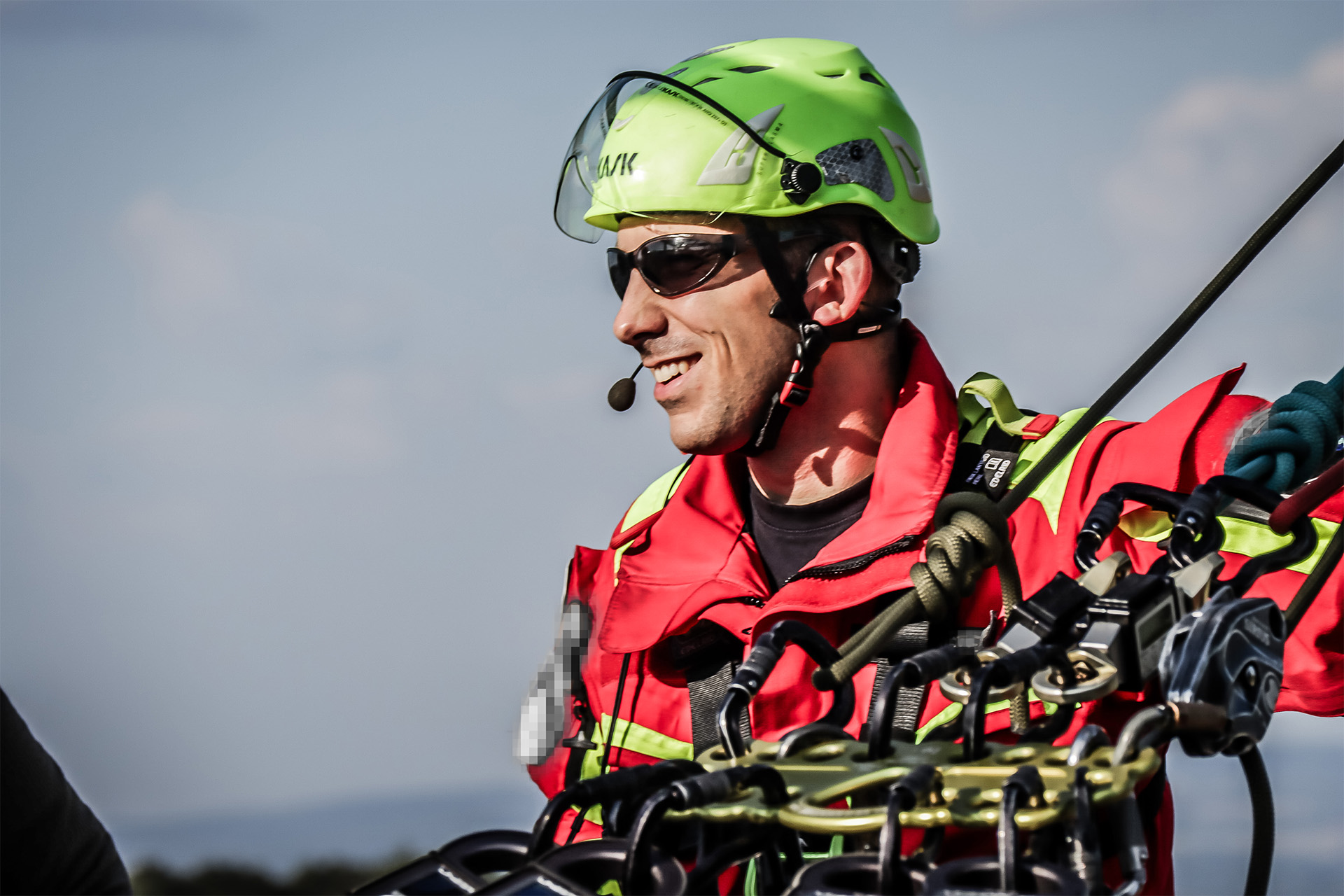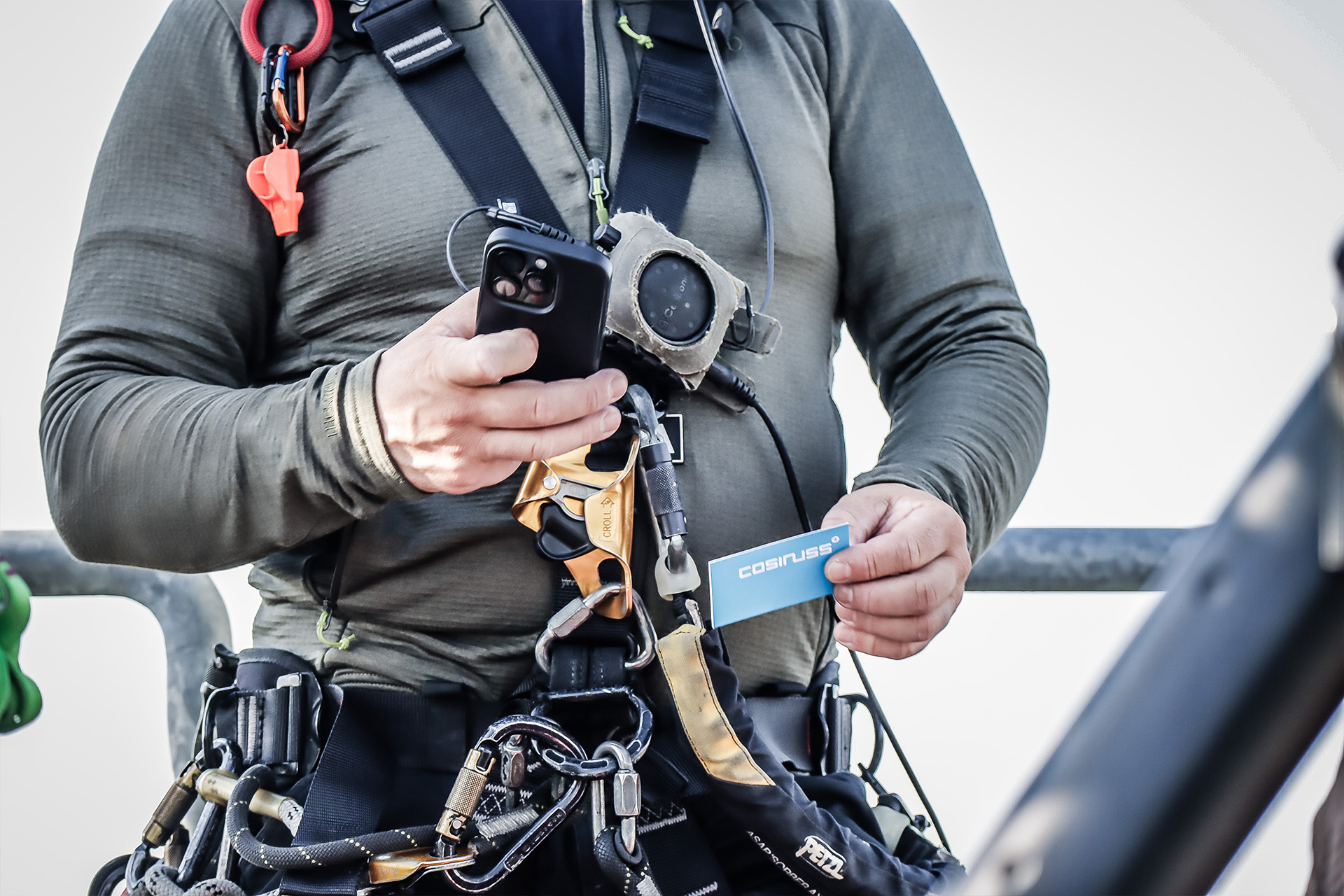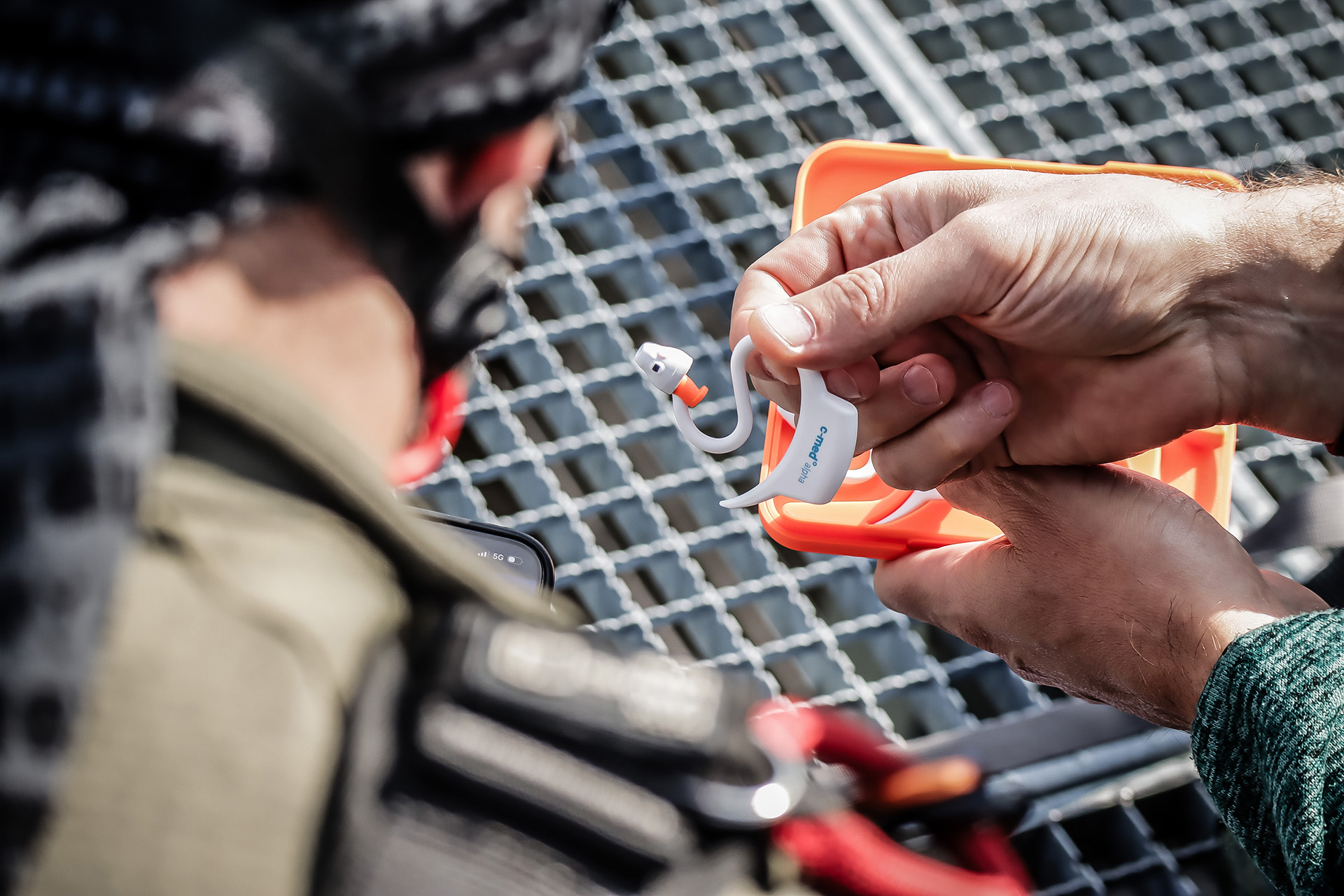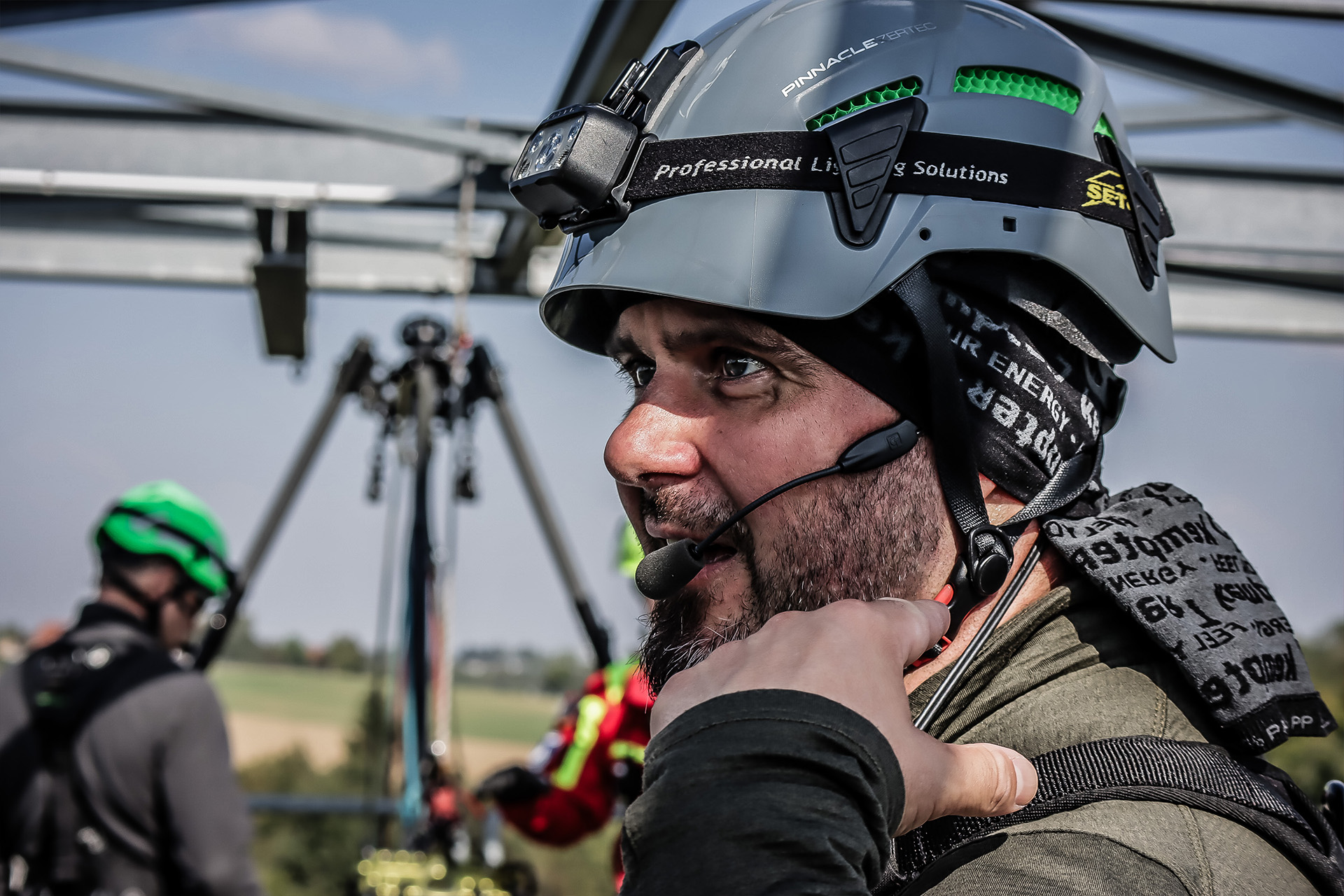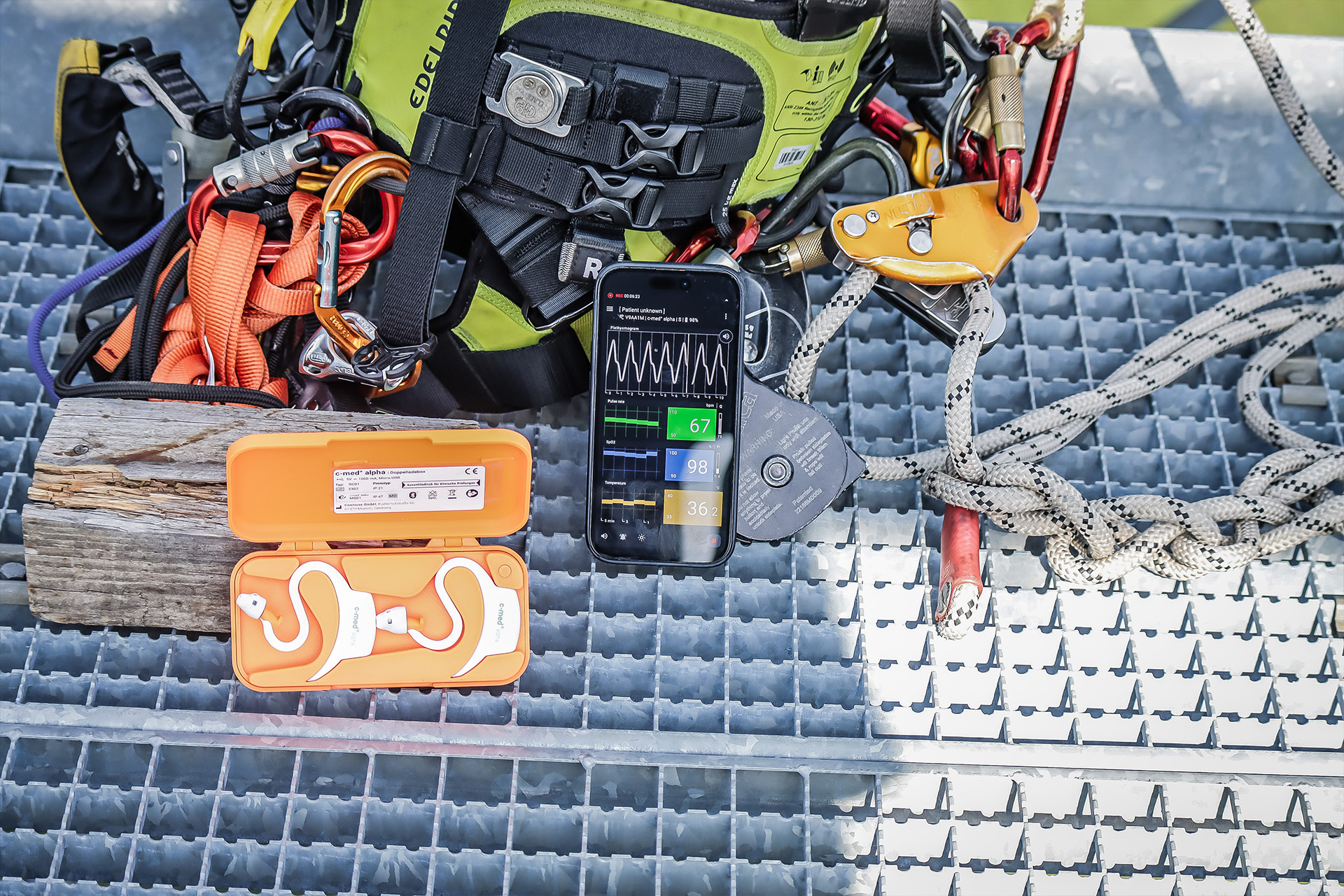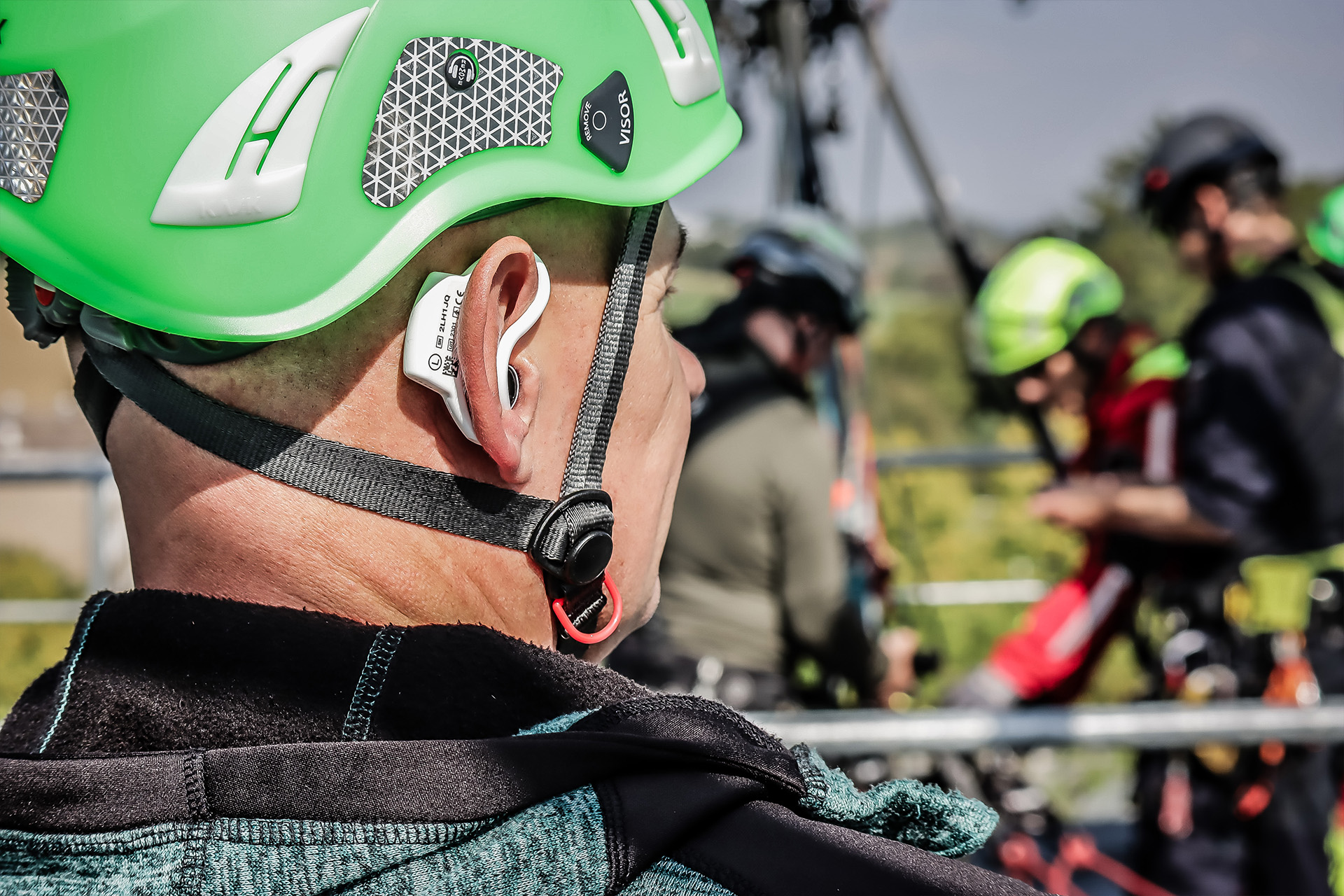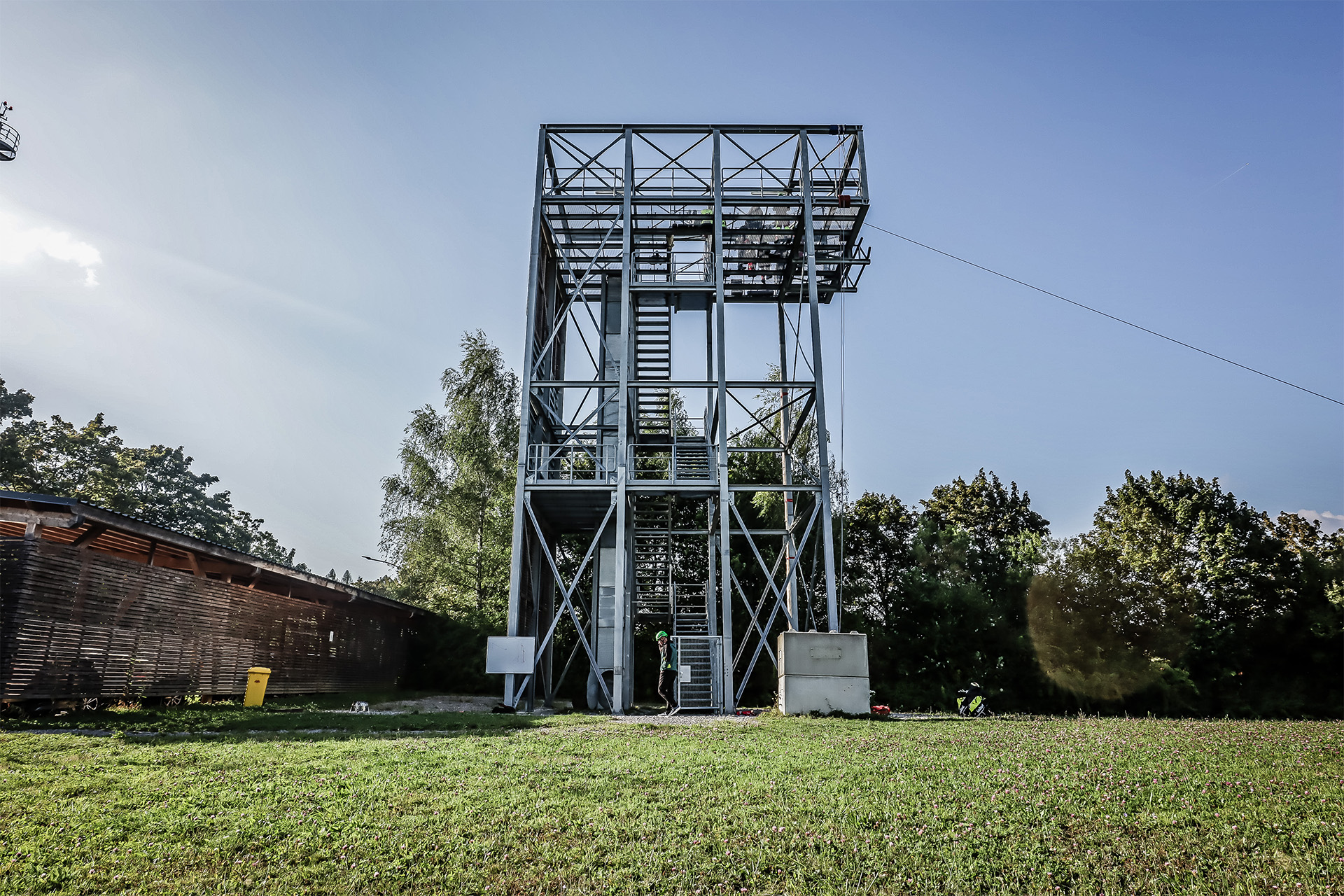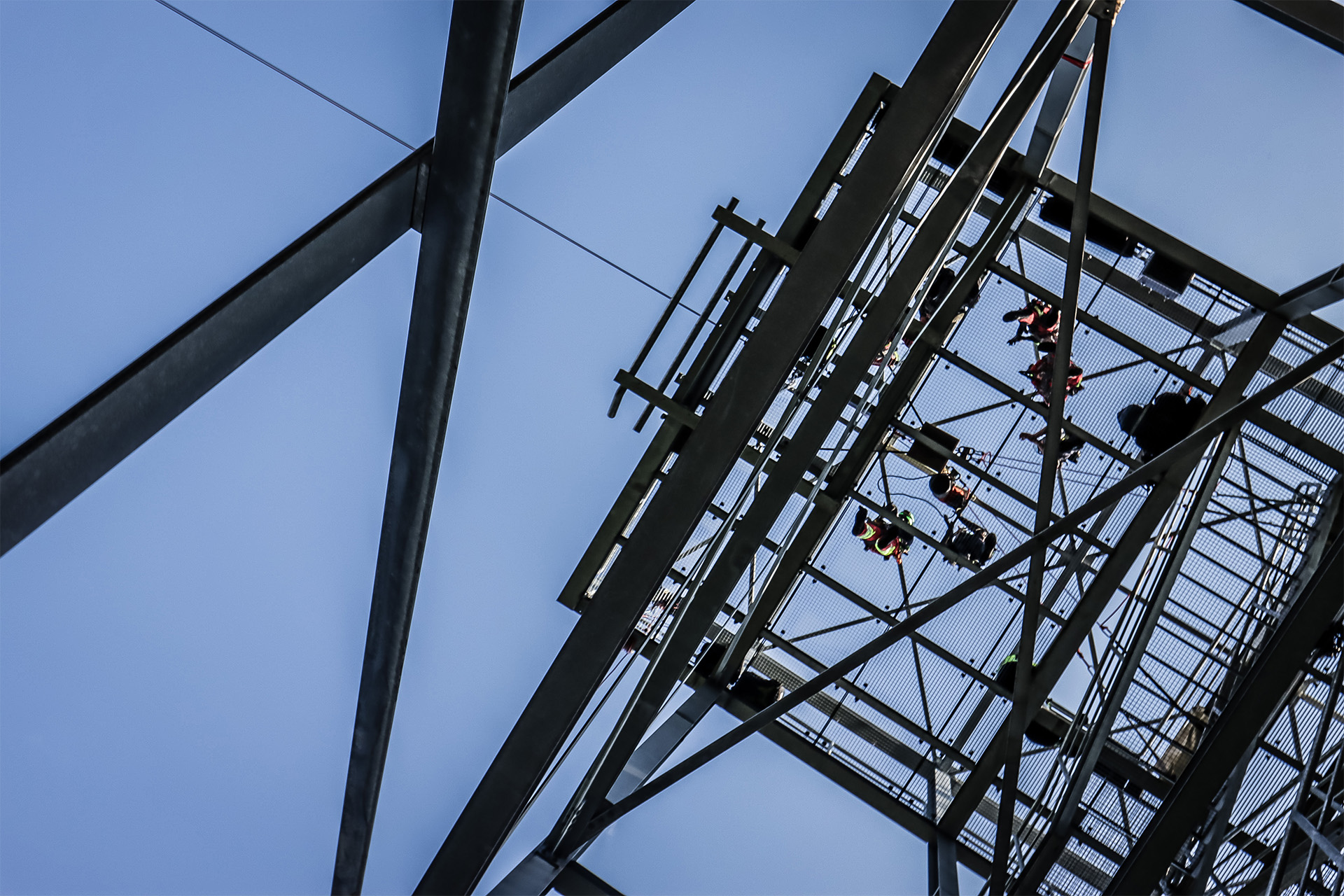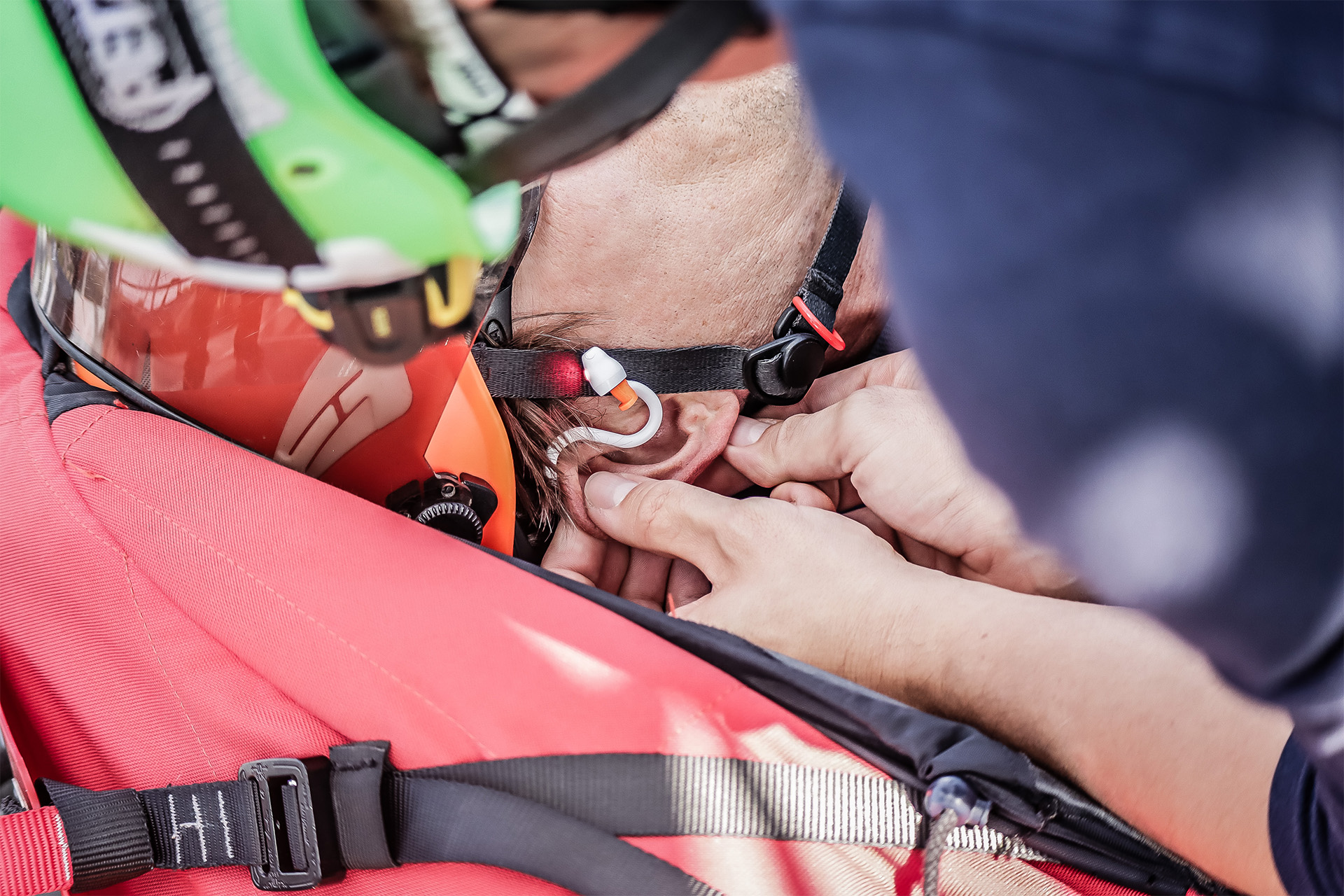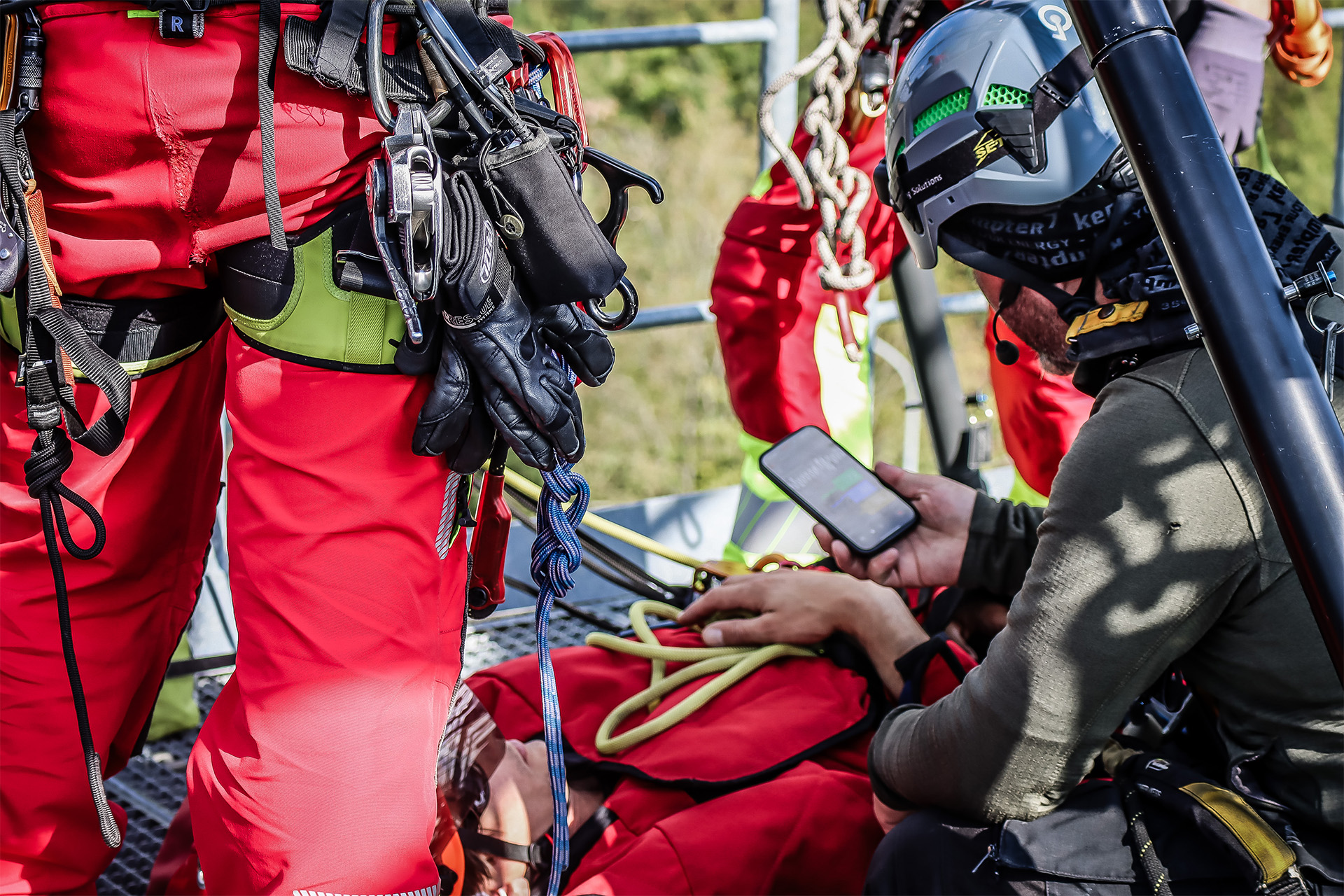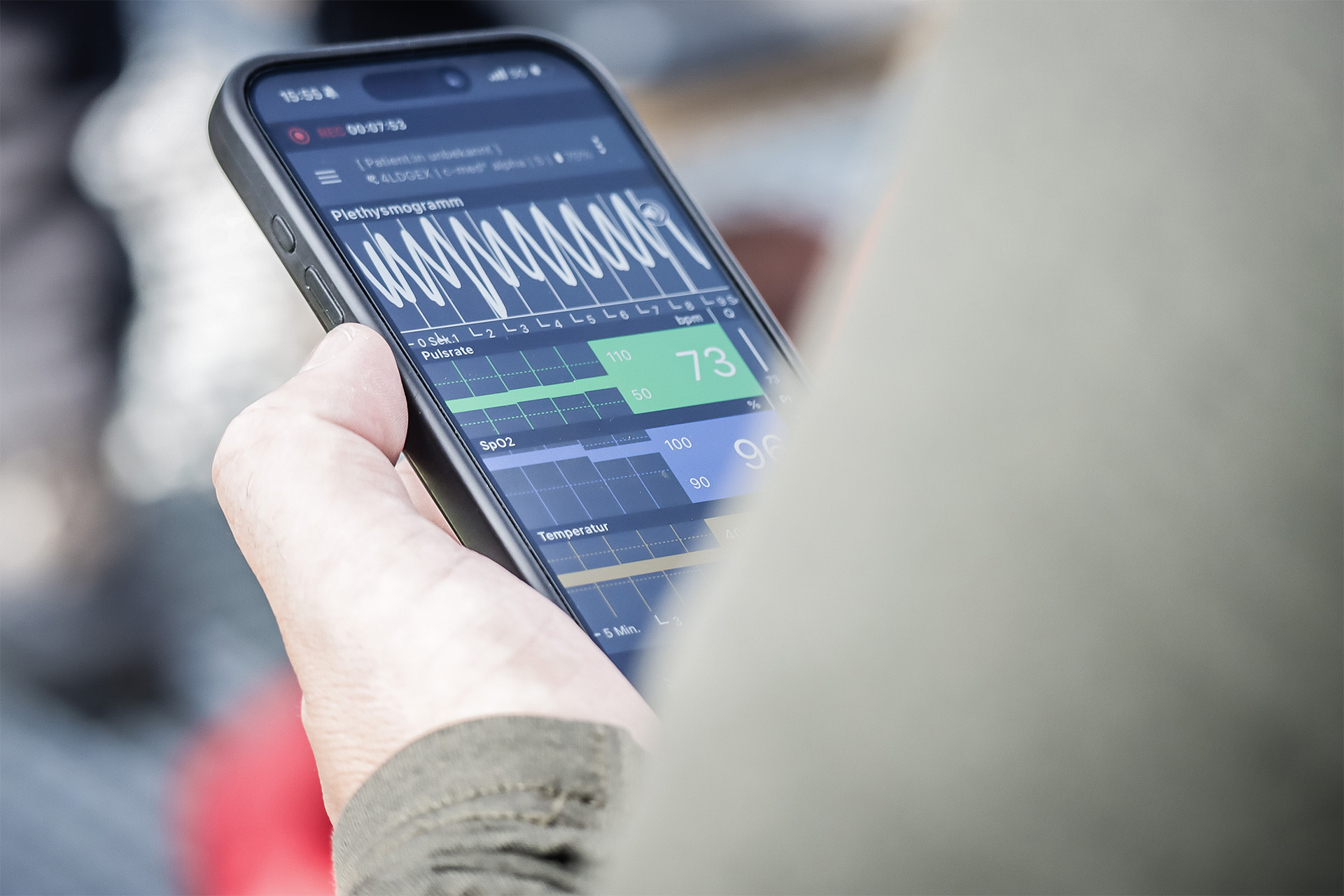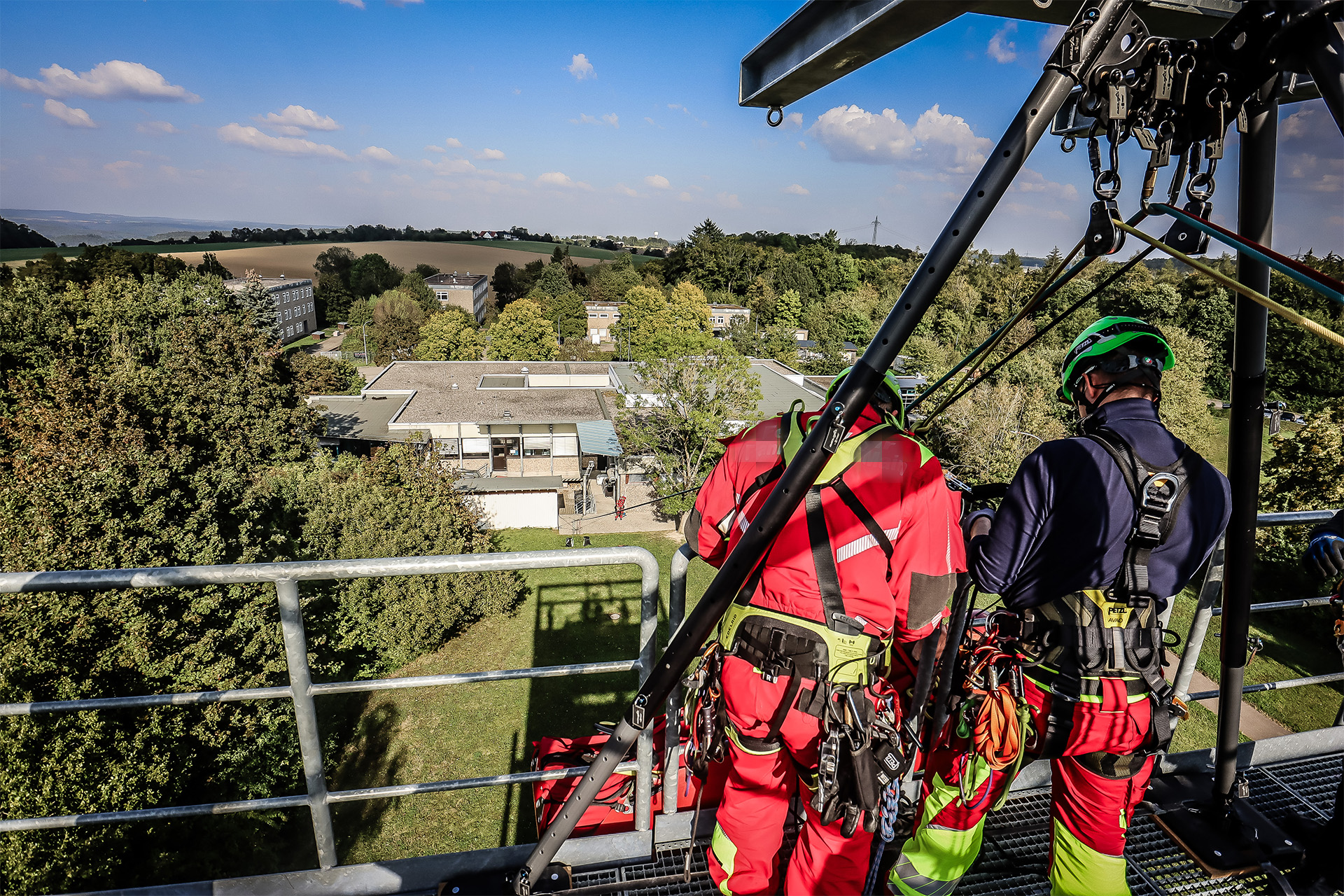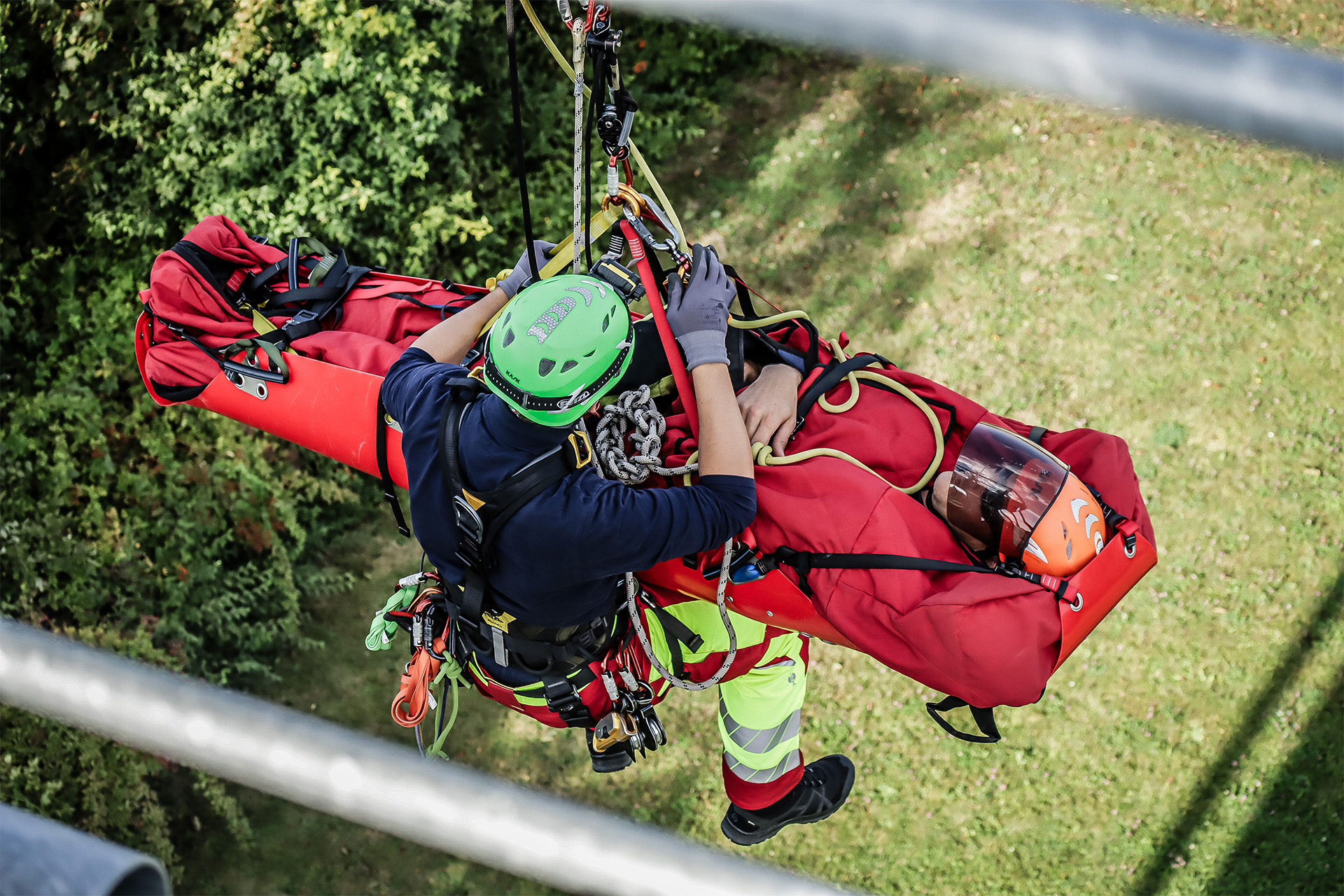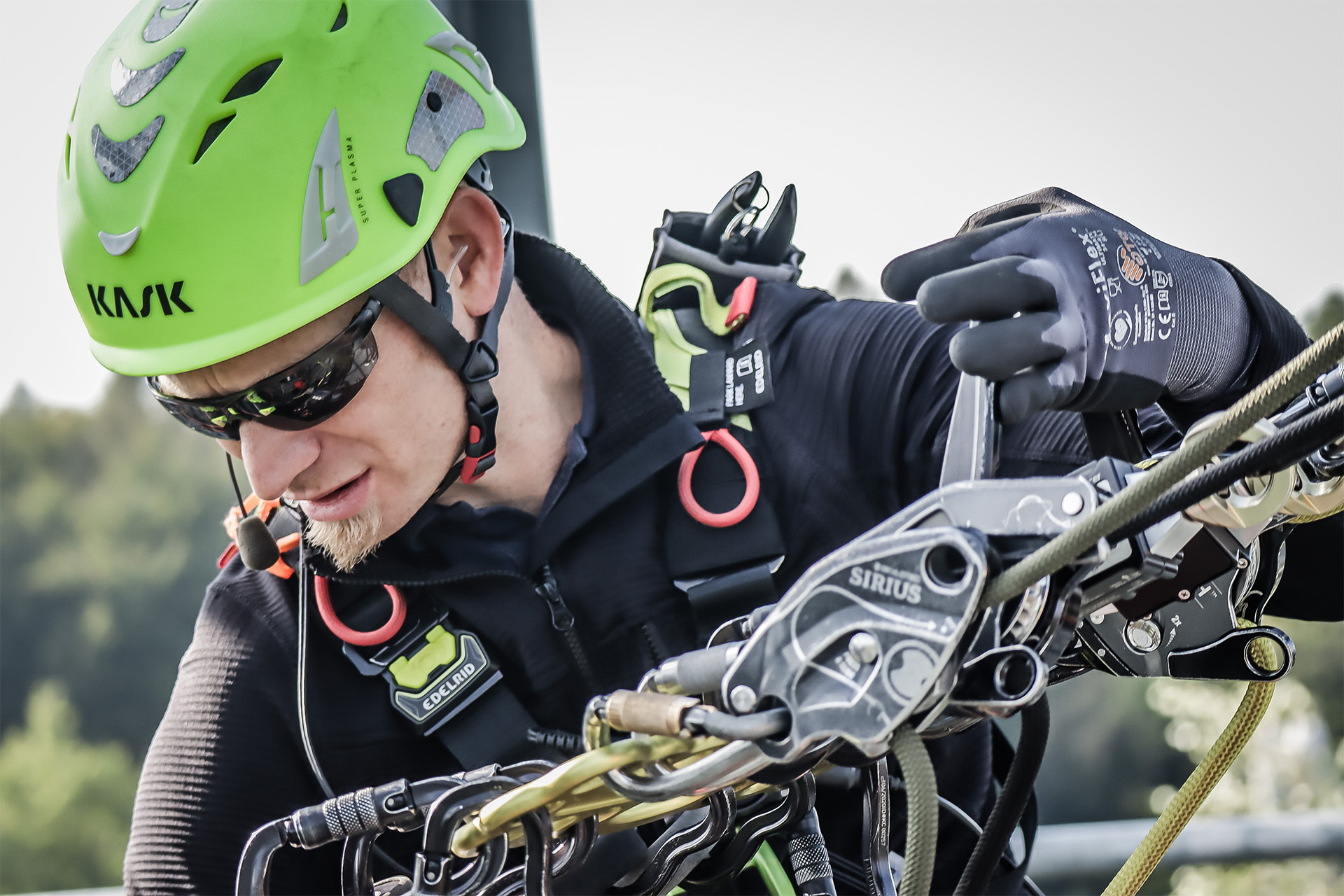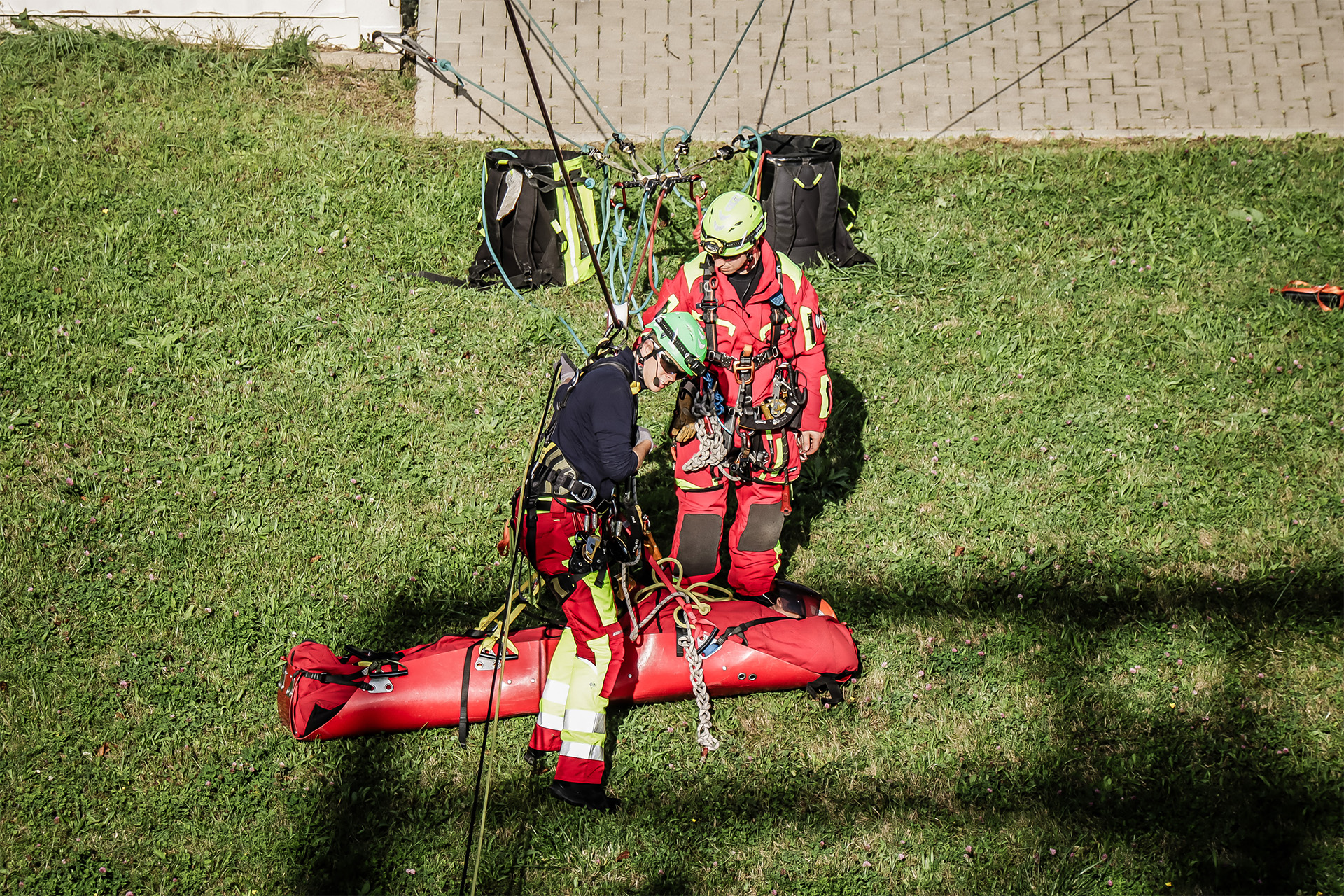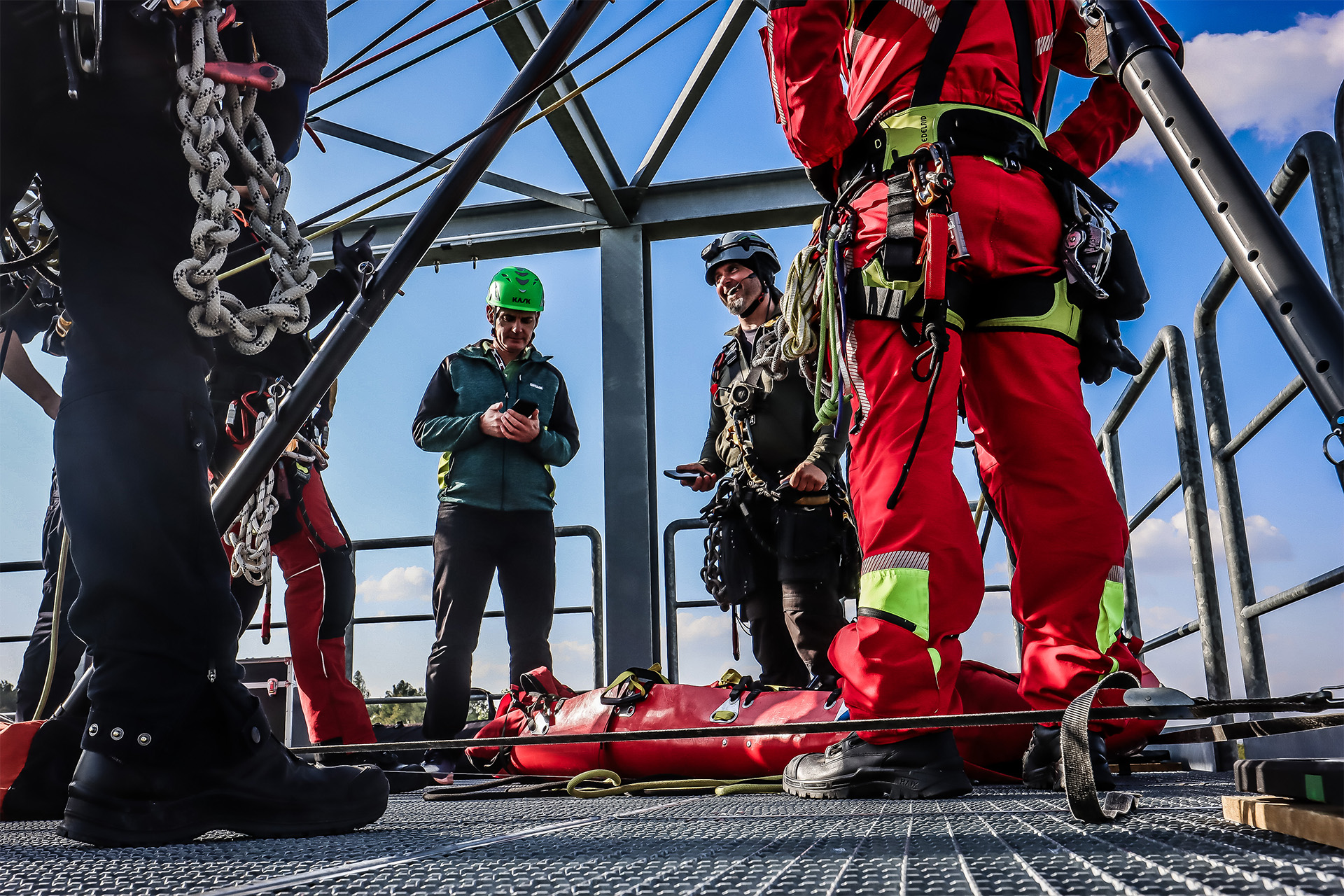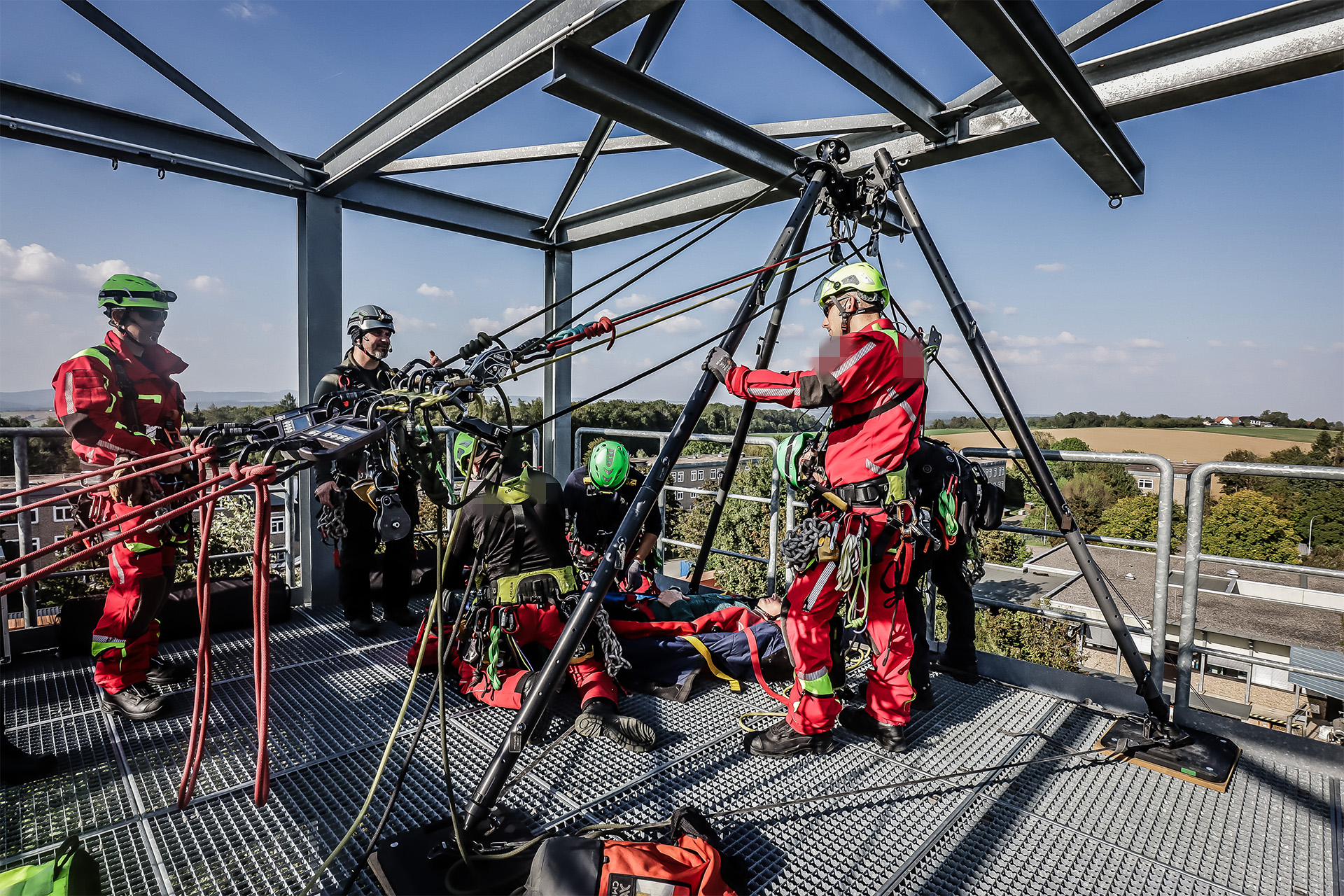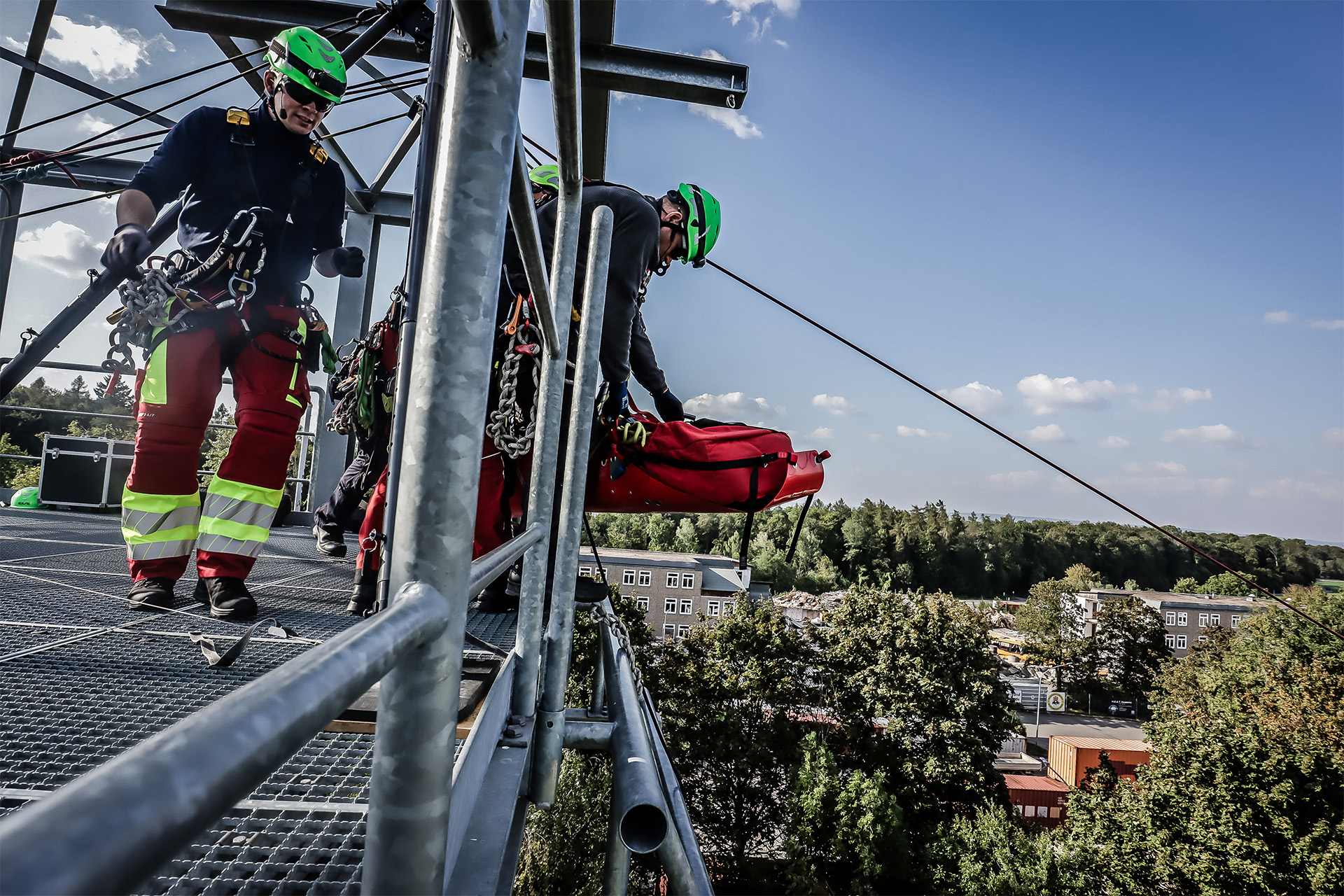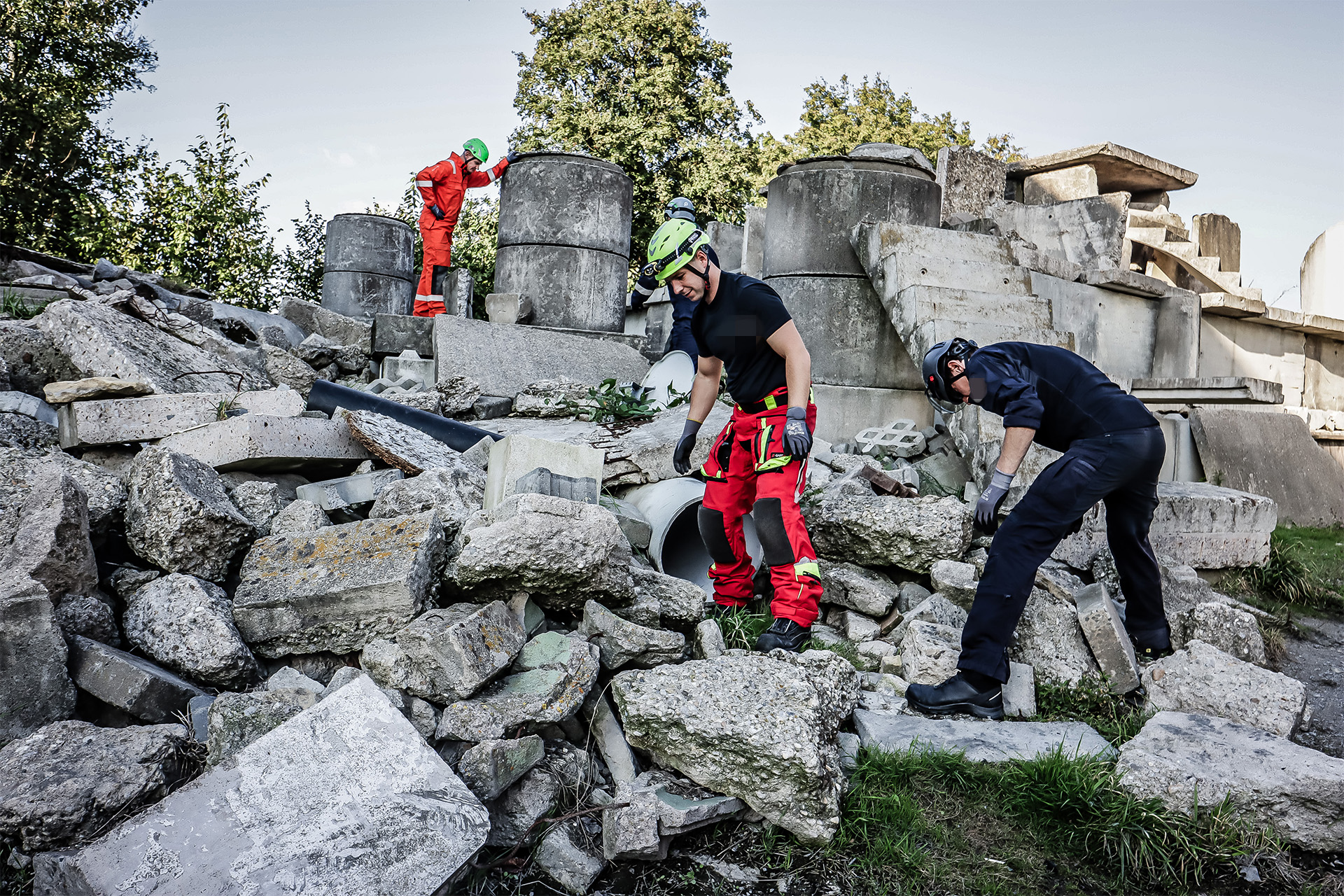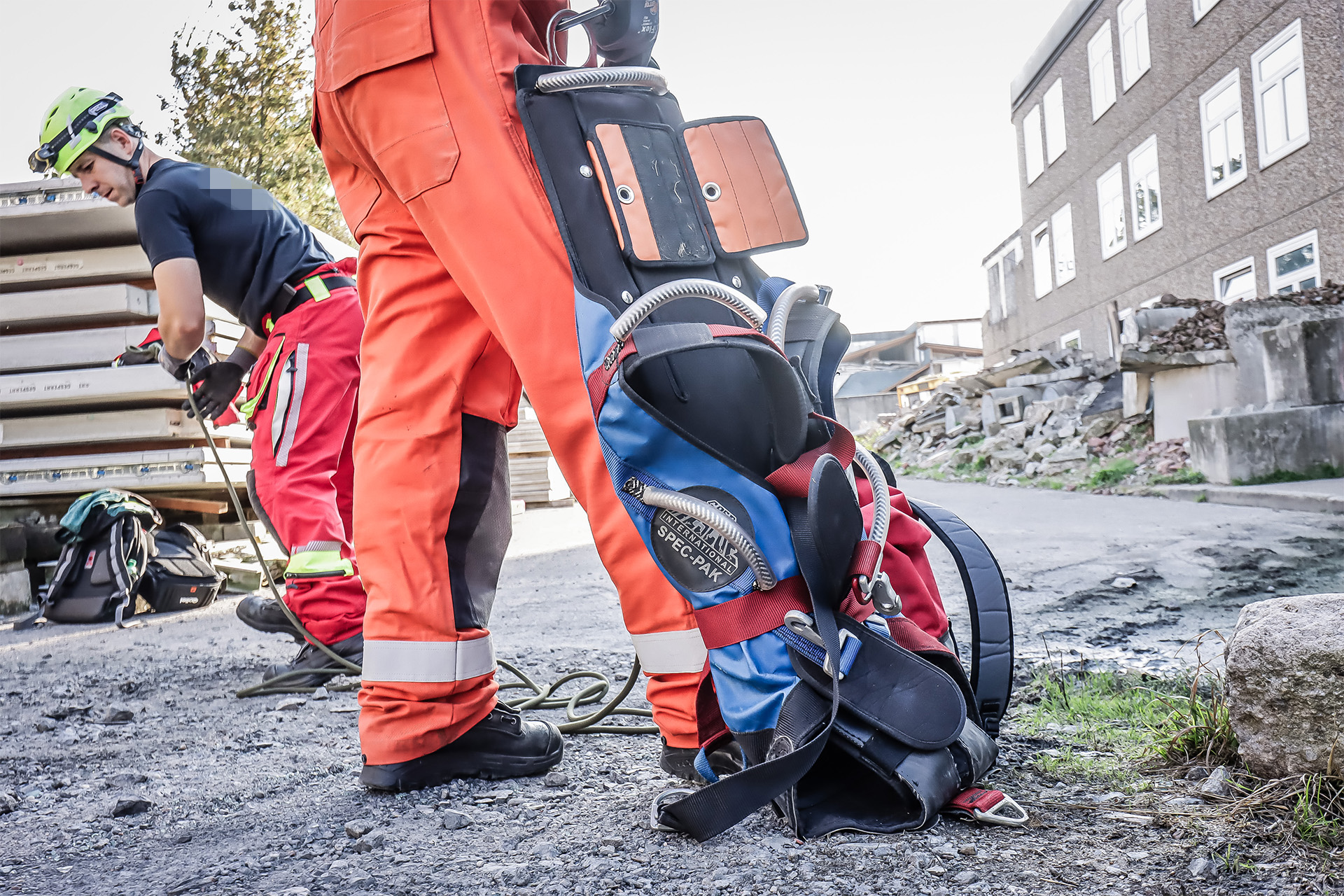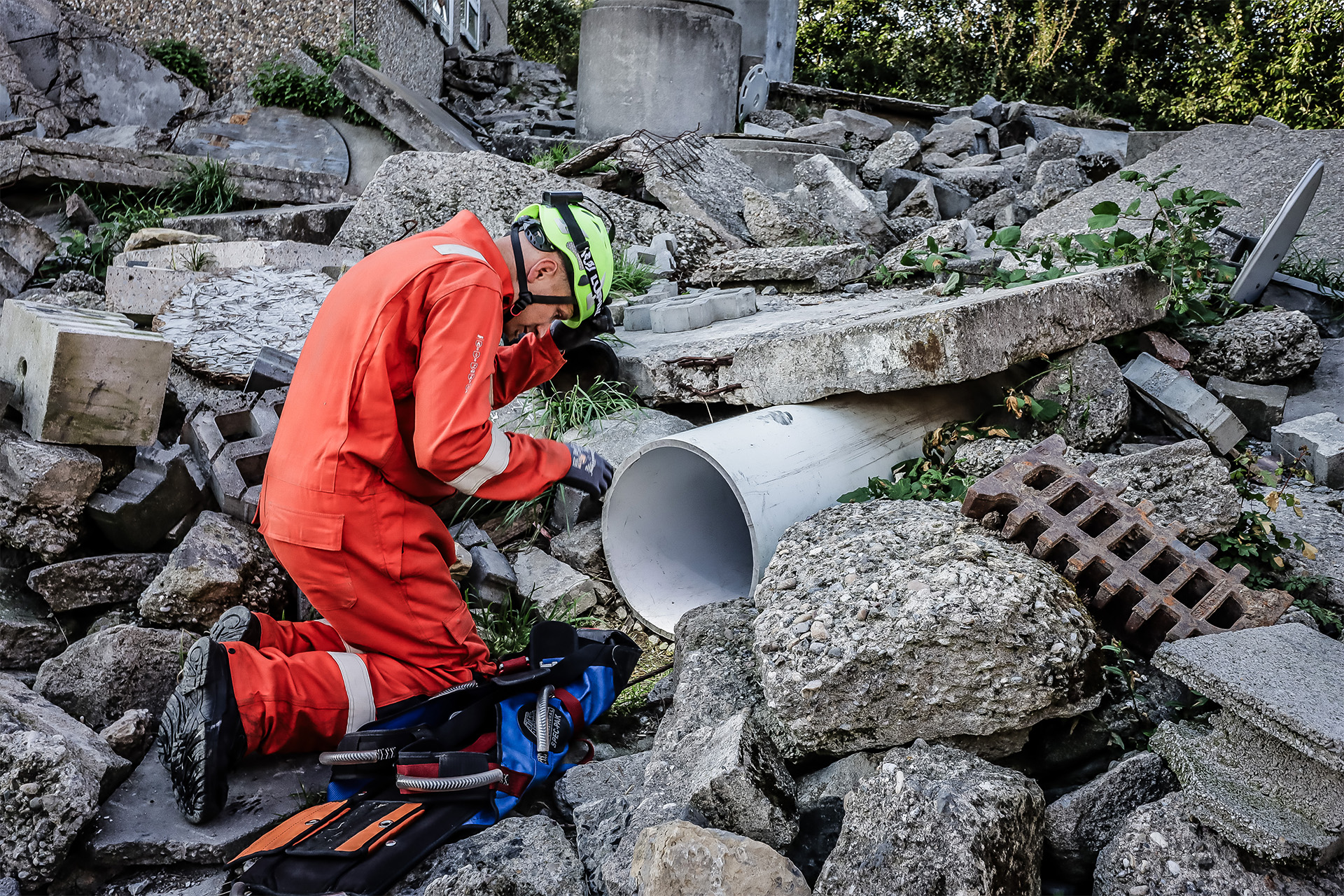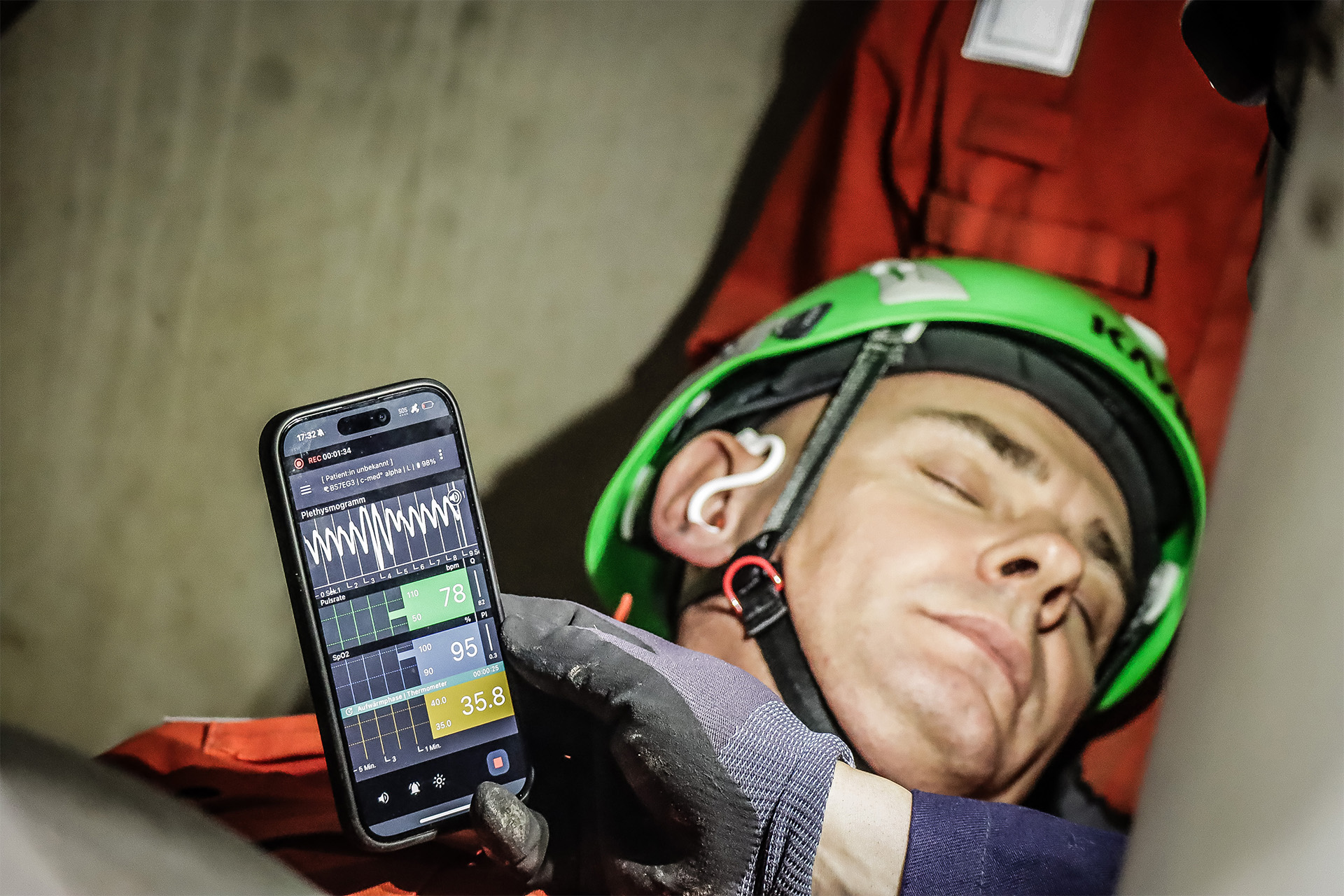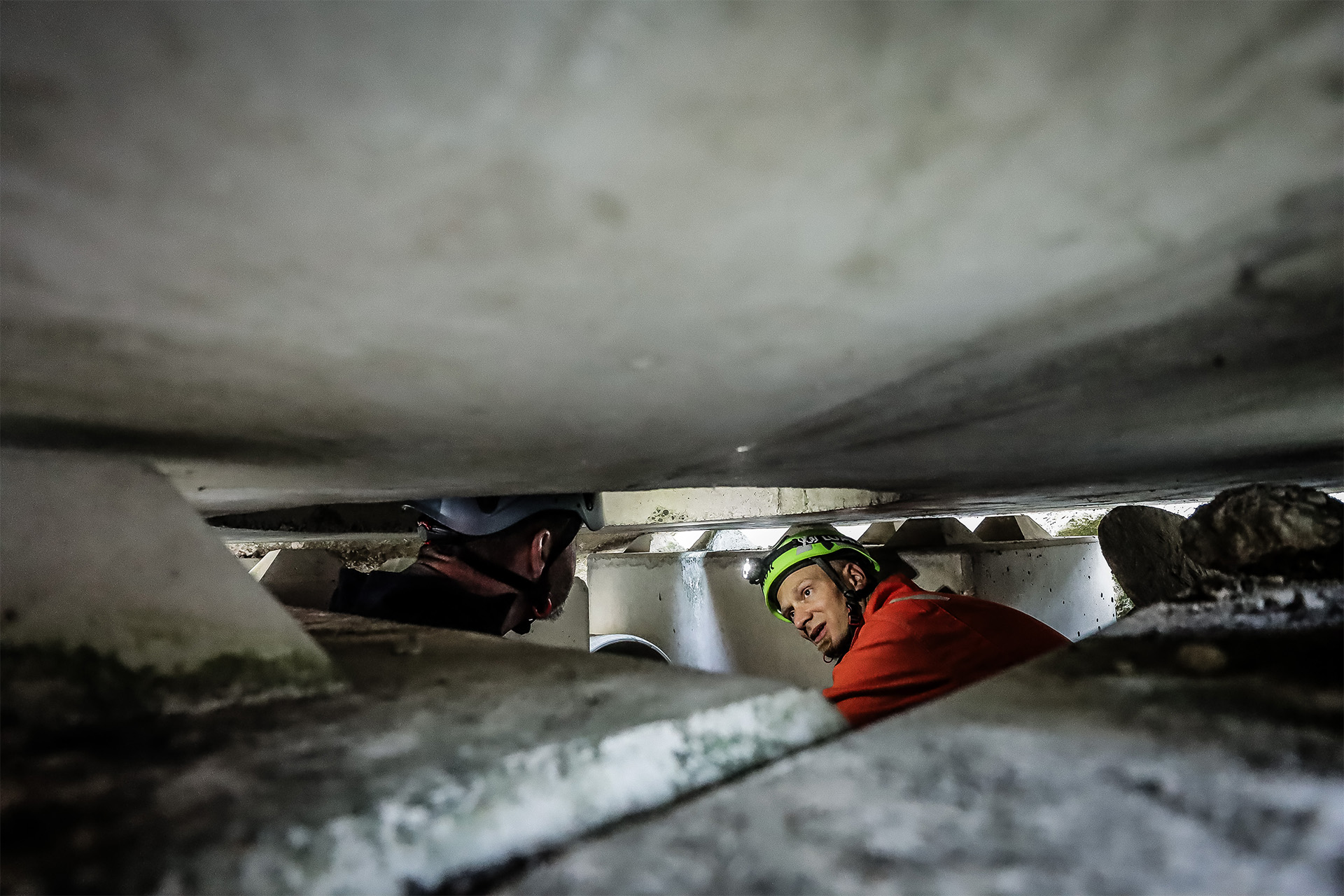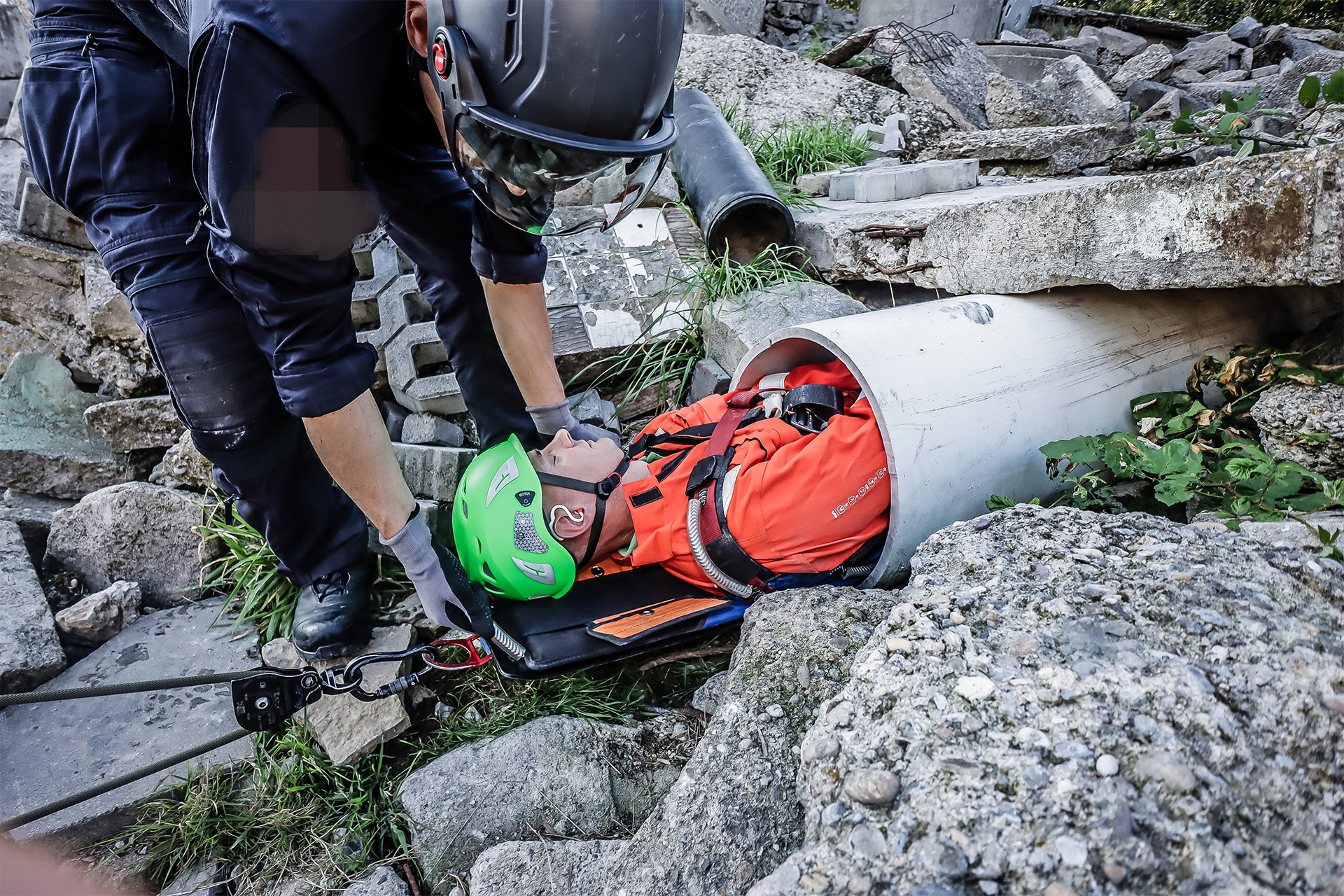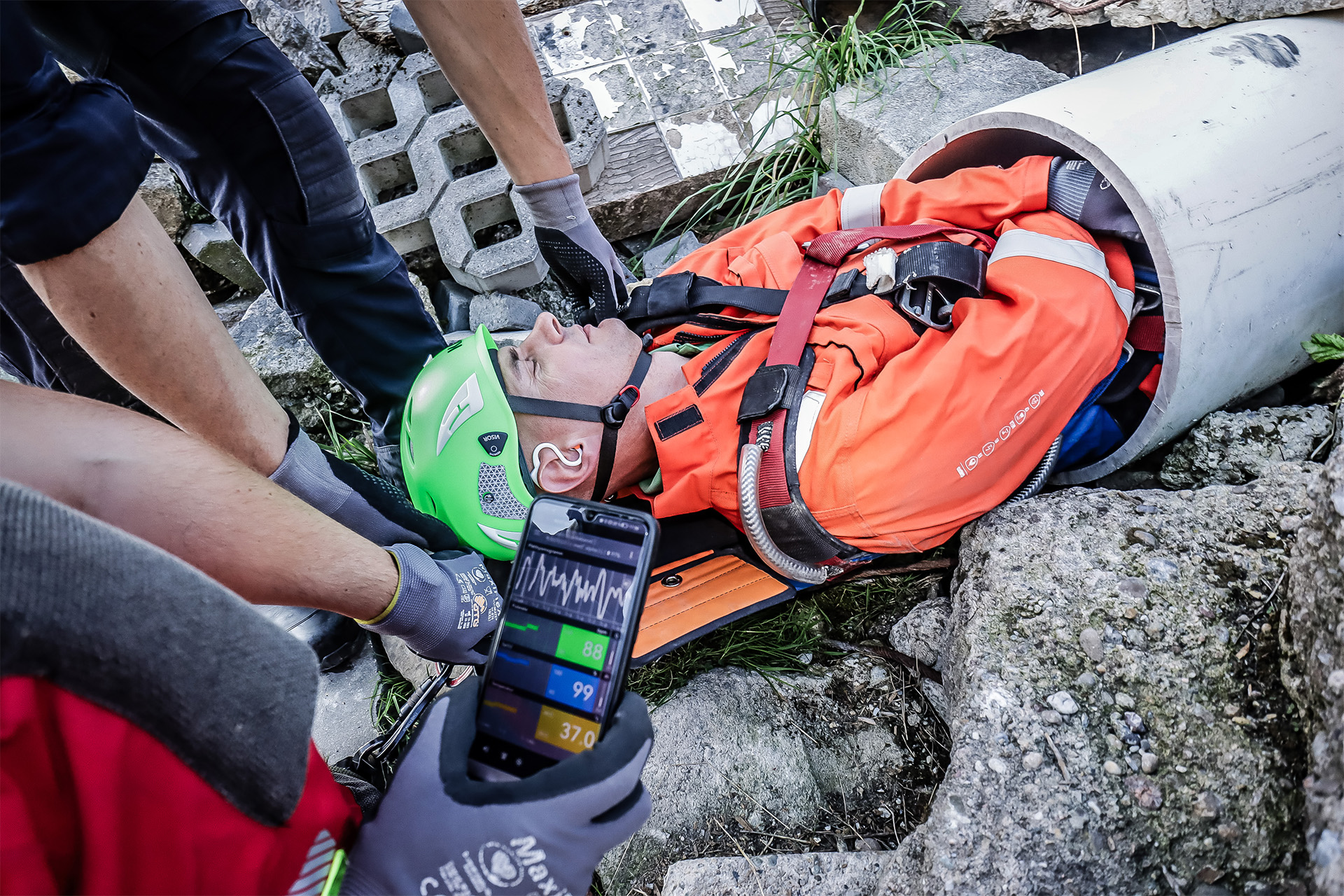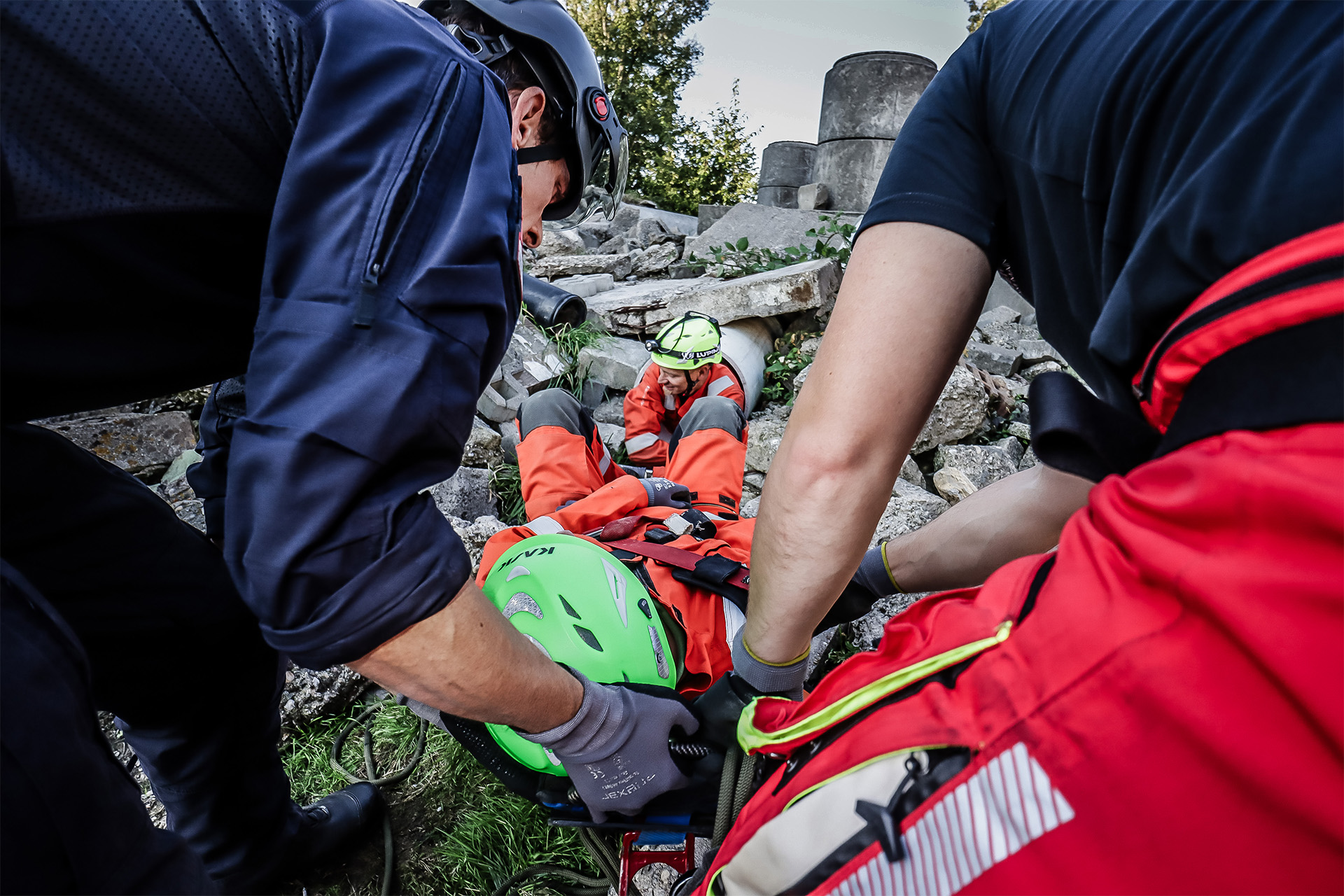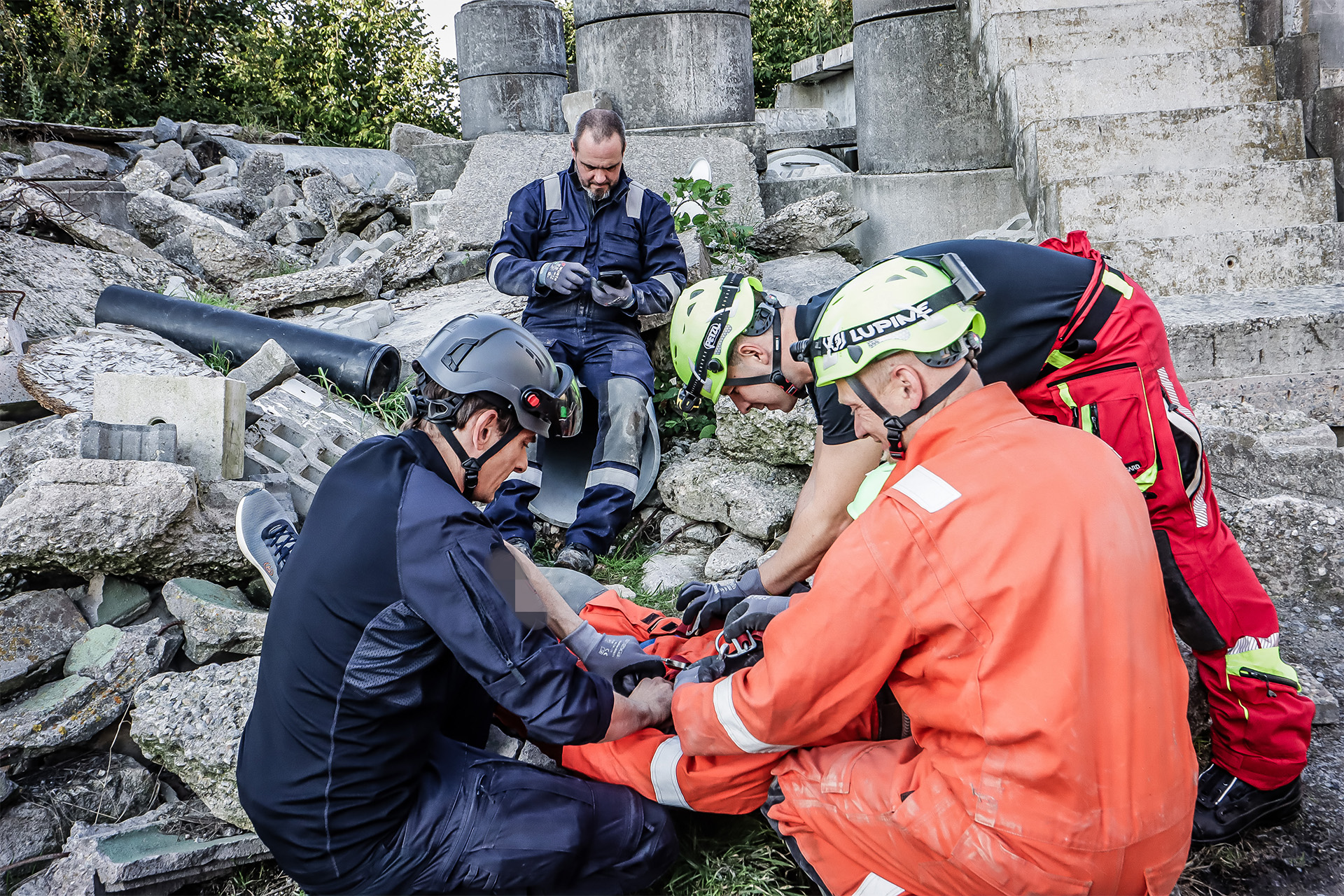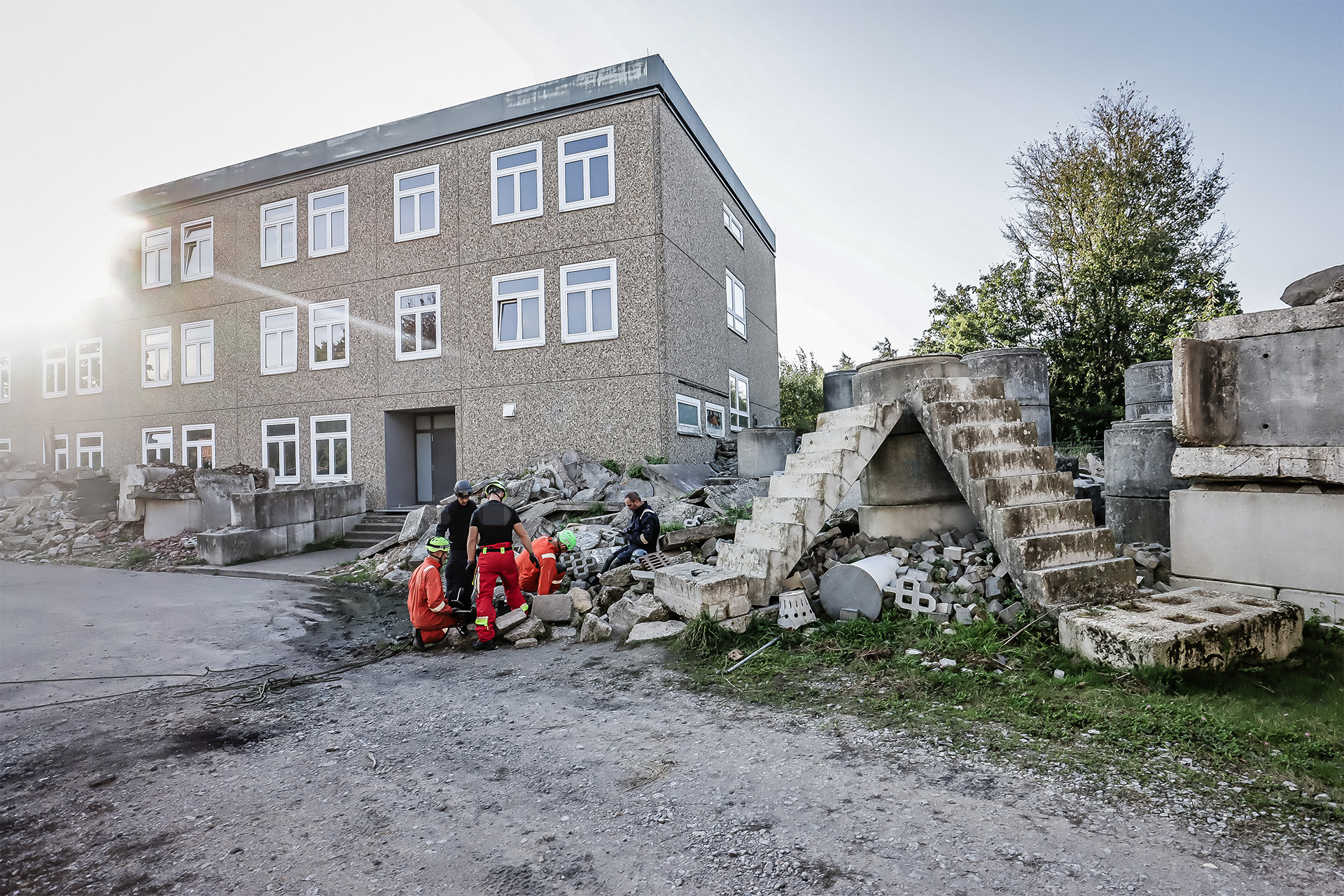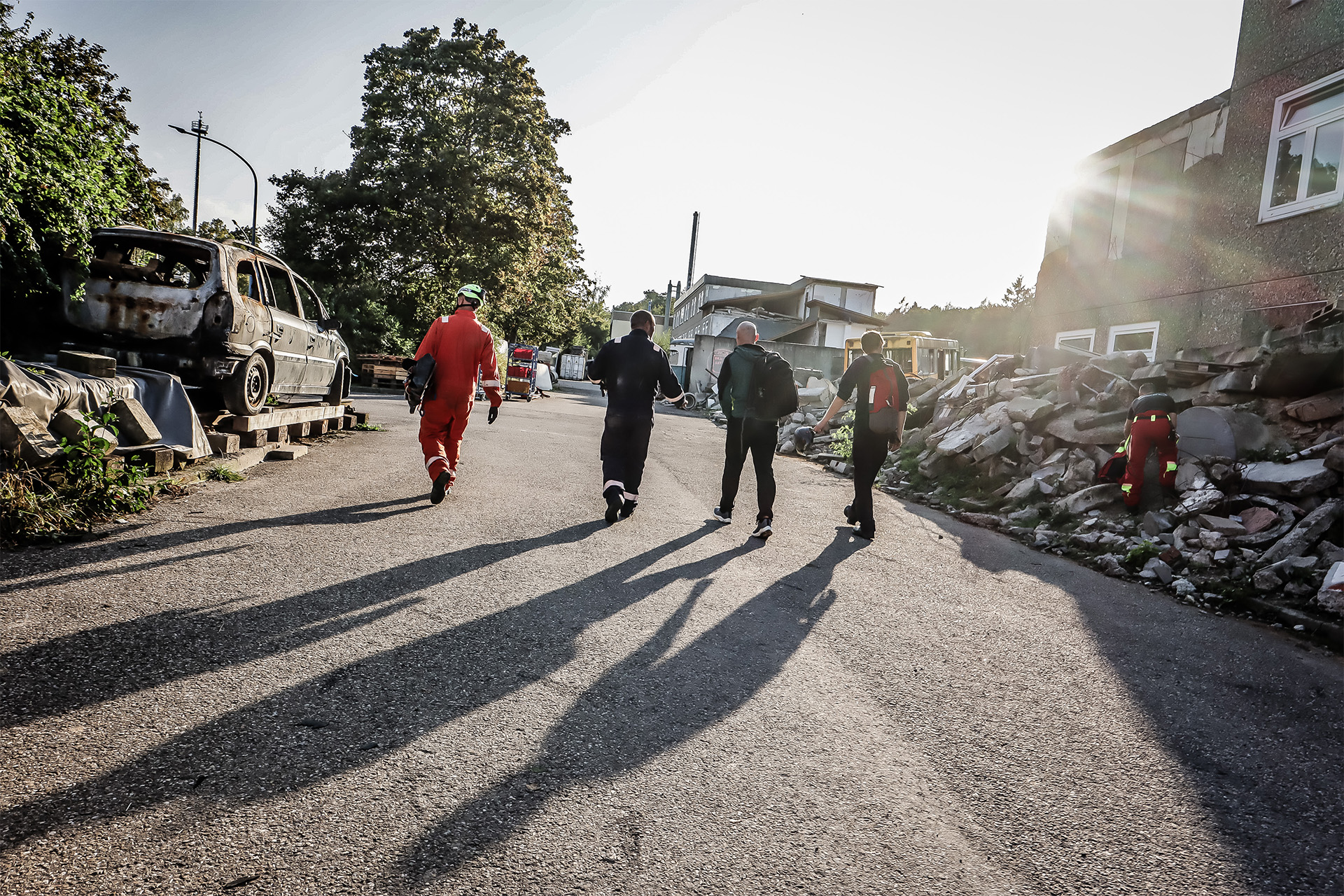Patient monitoring during special rescues from heights and depths
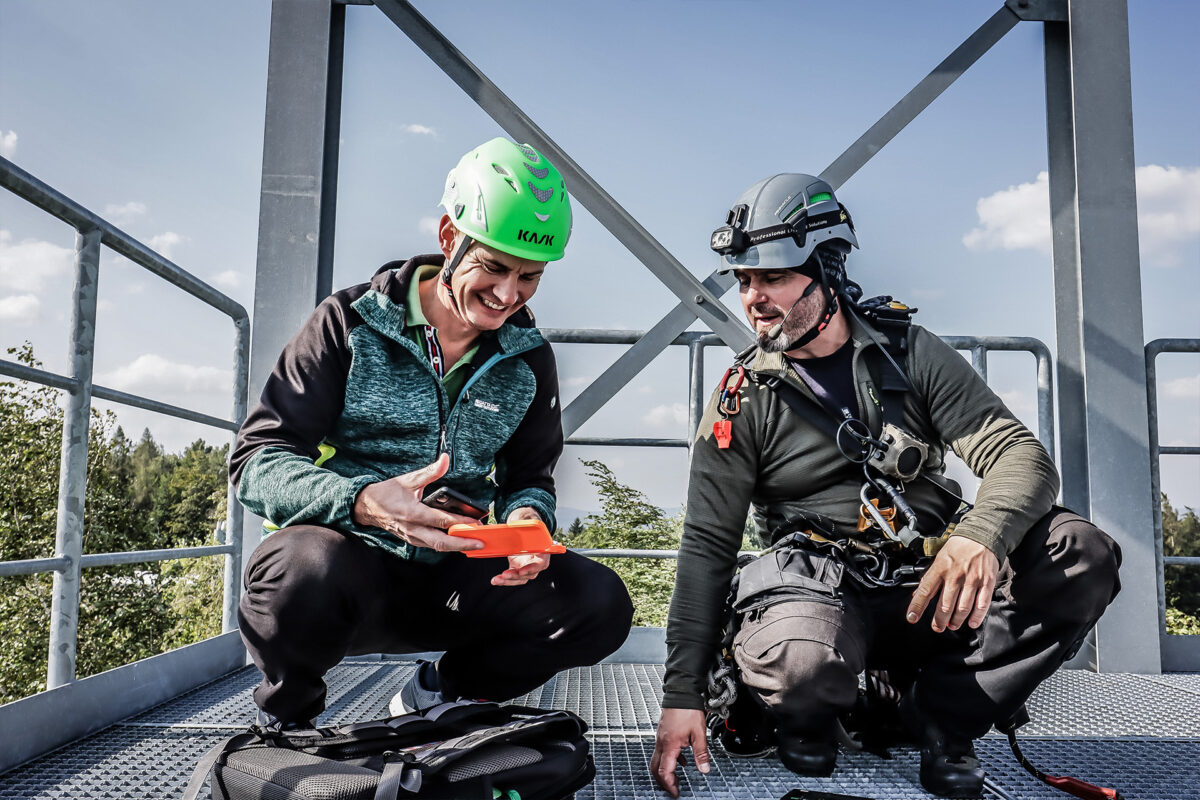
Special rescue from heights and depths (SRHT) refers to the search for, rescue service or emergency medical care and evacuation of people from emergency situations at heights or depths. This type of rescue must be practiced and rehearsed regularly so that action can be taken quickly and safely in an emergency. The “Training Center Retten und Helfen” (TCRH) in Mosbach, Baden Württemberg, also known as “Disaster City”, is ideally equipped for this. The TCRH offers the ideal environment to impart practical knowledge to rescue workers.
Special rescue from heights and depths is the profession of Axel Manz, one of the most experienced experts in this field and founder of Global Special Rescue Solutions (GSRS). With his company, he offers professional training in complex rescue scenarios, among other things. As part of a seminar at the TCRH in Mosbach, he also tested the cosinuss° patient monitoring solution during special rescues under the most adverse conditions.
Among the numerous rescue scenarios tested were a challenging rescue from a height on the Disaster City training tower and the rescue of a trapped person after a building collapse, in which the evacuation through a narrow tube was simulated. In both scenarios, the rescuers would not have had access to the patient’s vital signs without cosinuss° technology, which means that important decisions have to be made virtually blind and time becomes an even greater stress factor. The lack of space, accessibility of the casualty and transportation options make continuous monitoring of the casualty impossible, even though it would be essential
Vital signs and their importance in specialized rescue
The recording of vital signs during special rescues from heights or depths is crucial for the patient’s outcome. In the first moments of a rescue, it is important to quickly obtain objective information about the casualty’s state of health. This information helps the rescuers to make an informed decision about the patient’s fitness for transportation.
Continuous monitoring of vital signs supports decision-making as well as confirmation and monitoring of further progress during the rescue. The fast and accurate recording of vital signs is therefore essential and improves the efficiency of the entire rescue process.
Results and findings from testing the cosinuss° solution
The cosinuss° solution, consisting of the c-med° alpha in-ear sensor and the cosinuss° Health mobile application, offers specialist rescuers a compact, lightweight patient monitoring solution that can be easily carried in a trouser pocket and used with smartphones or tablets. The c-med° alpha not only measures pulse rate, oxygen saturation and body temperature, but also provides important additional data such as perfusion and quality index. Thanks to the continuously visible PPG signal in the cosinuss° Health app, rescuers can carry out precise monitoring. With a weight of just 6.5 g, a size of 4.5 cm and wireless Bluetooth transmission, the sensor is not only extremely light, but also very user-friendly.
The minimal size, the ultra-light weight and the wireless connection to the display are the obvious advantages of cosinuss° technology, which every participant in the seminar recognized immediately. They make it possible to take patient monitoring to the injured person and use it. This means that the first major hurdle to continuous monitoring has been overcome.
However, there are other very relevant advantages that became clear during the trials at the TCRH:
Quick access
In the initial treatment of a patient in such difficult situations, the head is usually accessed first. This allows the c-med° alpha, which is placed in the ear canal, to be inserted quickly. Thus, several vital signs can be monitored without having to expose the patient further.
One device instead of many
Recording all relevant vital signs with just one device eliminates the need for multiple measuring devices.
Valid measurement
The placement of the multiparameter sensor in the external auditory canal, close to the internal carotid artery, has the valuable advantage that there is always a stable blood supply at this measurement location and therefore valid measurements are possible even if other parts of the body are no longer well supplied with blood. The continuous measurement of body temperature close to the body’s own temperature regulator, the hypothalamus, is also very important, particularly for injured people outside and especially in cold temperatures. The sensor in the ear canal can also be easily shielded from external influences, for example with the help of a headband, so that the best possible measurement results can be achieved.
Monitoring during transportation
The vital signs can be monitored during the entire rescue process, including transportation through tubes or with ropes. There are no cables that would make monitoring during transport impossible and the wireless data connection between the sensor and smartphone is possible up to a distance of approx. 30 meters without any problems.
Multi-view option
The vital signs of a patient can be viewed simultaneously by several rescuers on their respective end devices. In scenarios with limited visual and auditory contact, this function enables efficient coordination between the rescue teams despite the circumstances.
Documentation
Vital signs are automatically documented in the Health° App and can be easily exported, which is valuable for debriefing and improving rescue processes.
The solution from cosinuss° opens up new possibilities in specialized rescue that no rescuer will want to miss
The patient monitoring solution, which can be carried in a trouser pocket, makes it possible to monitor vital signs in many special rescue situations. In addition, this technology offers further advantages that will make rescue more efficient and safer overall.
The SRHT expert, Axel Manz, is enthusiastic about the new possibilities opened up by cosinuss° patient monitoring and is convinced that this technology will find its way into rescue services across the board.
Photo credit: Gerrit Schweiger (cosinuss°)
